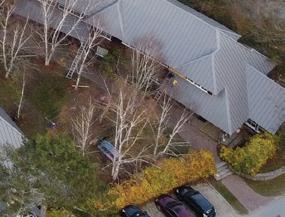


















COLLEGE OF THE ATLANTIC MAGAZINE
Editorial
EDITOR
Daniel Mahoney
EXECUTIVE
EDITOR
Rob Levin
COPY EDITOR
Caitlin Meredith
EDITORIAL ADVICE
Dru Colbert Darron Collins ’92
Jennifer Hughes
EDITORIAL CONSULTANT
Jodi Baker
DESIGN
Corey Blake Z Studio Design
Administration
PRESIDENT Darron Collins ’92
PROVOST Ken Hill
ASSOCIATE
ACADEMIC DEANS
Jamie McKown
Kourtney Collum
DEAN OF ADMISSION
Heather Albert-Knopp ’99
DEAN OF INSTITUTIONAL ADVANCEMENT
Shawn Keeley ’00
DEAN OF ADMINISTRATION
Bear Paul
DEAN OF STUDENT LIFE
Joshua Luce
DIRECTOR OF COMMUNICATIONS
Rob Levin
Board of Trustees
TRUSTEE OFFICERS
Beth Gardiner, Chair
Marthann Samek, Vice Chair
Hank Schmelzer, Vice Chair
Ronald E. Beard, Secretary Barclay Corbus, Treasurer
TRUSTEE MEMBERS
Cynthia Baker
Timothy Bass
Michael Boland ’94
Joyce Cacho
Alyne Cistone
Heather Richards Evans
Allison Fundis ’03
Marie Griffith
Cookie Horner
Nicholas Lapham
Howard Lapsley
Casey Mallinckrodt
Anthony Mazlish
Chandreyee Mitra ’01
Roland Reynolds
Nadia Rosenthal
Laura McGiffert Slover
Laura Z. Stone
Steve Sullens
Claudia Turnbull
LIFE TRUSTEES
Samuel M. Hamill, Jr.
John N. Kelly
William V.P. Newlin
TRUSTEES EMERITI
David Hackett Fischer
William G. Foulke, Jr.
Amy Yeager Geier
George B.E. Hambleton
Elizabeth D. Hodder
Jay McNally ’84
Philip S.J. Moriarty
Phyllis Anina Moriarty
Cathy Ramsdell ’78
Hamilton Robinson, Jr.
William N. Thorndike
John Wilmerding
EX OFFICIO
Darron Collins ’92
At College of the Atlantic, we envision a world where creativity, presentness, compassion, respect, and diversity of nature and human cultures are highly valued. A world where all people have the opportunity to construct meaningful lives for themselves, gain appreciation of the relationships among all forms of life, and safeguard the heritage of future generations.
COA Magazine is published annually for the College of the Atlantic community.
Each time I’ve addressed an audience across the past 13 years, I’ve introduced myself as, “Darron Collins, an alumnus and the president of College of the Atlantic.” Beginning July 1 of this year I’ll go back to introducing myself simply as, “Darron Collins, an alumnus of College of the Atlantic.” These 13 years have been outstanding: ultimately challenging and with great personal and professional rewards. Just like the family of COA President Steve Katona when I was a student, the elements of my family got the chance to become part of the COA family. Collectively, we both helped shape and were shaped through the dance we did with this tremendous educational institution.
“Navigating Change” is a perfectly appropriate metaphor for the last opening letter I will pen for COA Magazine. We love our maritime metaphors at COA—maps, compasses, sextants, and the like—and this one is particularly rich and inspired me more than a few times to yell over to Dan and the editorial desk to ask for more space. With plenty of ink by or about me in this edition, he appropriately told me to keep it short, so, consider this interpretation and tactic for doing such navigation.
Between my sophomore and junior year in high school I did a stint building fences out in the high desert of Idaho with the Student Conservation Association. My trip leader quickly became a mentor to me during and after my fence building. But at one point late in the trip he caught me just standing around and screamed at me, “WHY in God’s name are you just standing there when we have miles of this stuff to build,” and my response was that I didn’t know what needed to be done next.
“Sometimes, Darron, you just need to pick up a tool and have a go at it.”
That stuck, and that kind of having a go at things has since been a part of how I’ve moved through the world. Fast forward to my recent experiences volunteering on the Bar Harbor Fire

Department and the winter of 2022 when the hotel across the street from the college went up in flames. Building on fire. Things to do. Pick up tool. Have a go. And just as I did I felt a large hand on my collar and a verbal and physical call for restraint: “Collins you stand here and don’t move a muscle until I tell you to.”
When managing flames and highly flammable things, such freelancing is highly frowned upon. It turns out, in a perfect example of life-long learning, that navigating change requires knowing when to just have a go at it and when to stand at attention and be ready to respond to commands; requires balancing innovation with expertise; requires individual initiative and effective collaboration.
The pages of this magazine tell stories of navigation and of change, from students and alums and friends from the distant past and this year. They tell the story of our own Ship of Theseus, and how we navigate all the while replacing the planks on the high seas. I think you will be both entertained and edified, and will come away with a better understanding of who we are and what we do. Enjoy.
Darron

AHANDFUL of years ago, I was pretty sure the world was going to end. All the signs were there: bugs everywhere, strange dogs, smells in the air, a low hum from behind the refrigerator. We traveled out to California to visit our families. We made it to Santa Ana, CA, and were directed to an exquisite taco truck for dinner. We heard the truck had become popular so there was usually a line, but it was worth the wait. We went and joined the 30 young and older souls waiting for food. As we waited, we noticed cars parked on the road next to the truck selling other homemade items: bread, ice cream, mixed drinks, textiles... It was like an informal artisan food and craft fair on the darkened streets of Santa Ana, 8 p.m. on a Thursday. After we got our food, we sat on the ground enjoying our meal with all the other families spread out on the cool concrete, and I remember thinking in that instant that it was all going to be OK; that this human moment—facing all these other people—outweighed the abstract fear of world destruction no matter how many dogs crossed my path.
I feel the same way about this issue of the magazine, Navigating Change. There are fewer tacos here but there is that same feeling of people coming together. Coming together is key in a world where it has become easier and
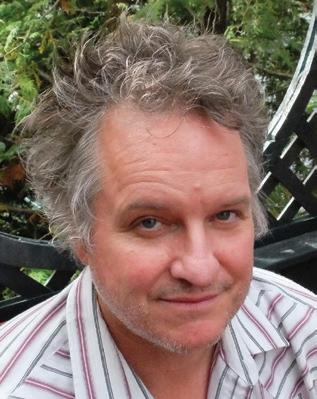
easier to fly apart. The digital aspect of culture makes us sometimes feel like we are everywhere all at once, engaging with folks from far-flung corners of the galaxy... Like everything matters so much all the time. But the cost of this is that we feel ultimately powerless to do anything about the problems we encounter in the digital domain, which can lead to powerlessness in general. As Jack Giaour says in his interview for Navigating Change, "I’m trying to reconcile the feeling of not wanting to engage with it anymore, but I also feel like I'm responsible to engage with it, if only to just witness it and acknowledge that it's happening."
Which brings up the idea of responsibility. Ever since reading (failing to read?) the work of Emmanuel Levinas, I have come to see responsibility in a very Levinasian light. Levinas says the face-to-face encounter with another human—the Other—is the foundational experience for ethical responsibility. Basically, we respond to the Other and are responsible for the Other; it is through this obligation, this responsibility to the Other, that we come to know ourselves. I love the intimacy here. Knowingness begins face-to-face, responding to someone else. If you look, there are lots of faces in this issue: new faces at the college, new trustees, old friends, and faces of those who have traveled to the other side, may they rest in peace. There are face-to-face encounters with fishing communities in Maine and on Rakiura, and a lyrical essay written by a man who faced one of the darkest days in our nation’s history.
The work here is all about what happens when we face each other: we make connections, we build things, and we tell stories, which again makes me think of Levinas and what he says in Altérité et transcendance: “The very relationship with the Other is the relationship with the future.” Onward we go.
Dan
Stories by Rob Levin
PRIORITIZING DIVERSITY, equity, and inclusion, centering infrastructure improvements, and boosting College of the Atlantic’s visibility are the three main focus areas of COA 2030, a new strategic plan for the college passed by unanimous vote at All College Meeting during Week 10 of the 2023 fall term.
Passage of the plan capped off a yearlong planning effort, begun by COA President Darron Collins in fall 2022 and subsequently led by planning consultant Sarah Strickland beginning in winter 2023. That work included multiple listening sessions, ACMs, workshops, surveys, and a 17-member task force made up of students, staff, board members, and faculty. The Board of Trustees gave their unanimous vote of approval to the plan in their regular winter meeting in January 2024.
“This strategic plan is the result of a lot of deep thinking, collaboration, and hard work by so many members of the COA community,” said COA President Darron Collins '92. “It ably outlines the work that lies in front of the COA community to bring the college into the future while building a stronger, more effective, better organization.”
COA 2030 builds upon the 2015 Strategic Plan (The MAP) and critical work that has been underway since 2020 by planning groups, task forces, and student projects comprising food access and insecurity, housing, human resources, academic priorities, accessibility, and campus services. The plan commits to human ecology
as a framework for understanding and shaping the world, celebrates being experimental and collaborative, and illuminates the need for more effi cient systems in order to improve the quality of student experience and the school’s impact on Mount Desert Island, the broader world, and higher education.
“The 2030 Strategic Plan requires us to improve student wellbeing and postgraduation readiness, to update our campus systems and infrastructure, and to fortify the fi nancial health of the college and its employees,” the task force states in the introduction. “Simultaneously the 2030 Strategic Plan invites us to stretch outward and upward; to refi ne our participatory governance; to embody adaptive leadership; and to continue to celebrate our interdisciplinary and human-ecological perspective. We must move forward on all.”
Broken into six main strategic priorities, COA 2030 embraces and seeks to improve current COA structures such as the ACM governance model, boost student wellbeing and post-graduation readiness, improve student retention, enhance the fiscal health of the college, and ensure the continuation of COA’s unique approach to transformational teaching and learning.
COA 2030 highlights include creation of a fund to allow the college to meet 100% of fi nancial need for all students, developing an equity fund to help all students access basic academic and extra-curricular needs, including unpaid internships, and
eliminating food insecurity among all students. The plan also calls for the development of off-campus, COA-managed housing for staff and faculty, completion of a feasibility/ business plan to offer alternative, year-round, revenue-producing programs, and investment in campuswide, integrated, secure, coherent IT systems that support teaching, research, on- and off-campus learning, business offi ce functions, and campuswide communications. Finally, COA 2030 calls for ensuring that the COA campus is physically accessible to all for year-round use.
COA 2030 will form the foundation of the college’s next capital campaign, says dean of institutional advancement Shawn Keeley '00. Preparation for the campaign will take place over the next year as an operational plan comes into being.
“Philanthropy has always been a catalyst to major steps forward for the college, whether new initiatives, buildings and infrastructure, or endowments to support our programs. To accomplish the goals outlined in the strategic plan, we will once again need the support of our community,” Keeley said. “College of the Atlantic has an incredible history of constantly growing, improving, and evolving as an institution, and that is due in large part to the many generous people who have invested in us along the way. I’m really looking forward to working with our supporters, both existing and new, to actualize the many ambitious improvements outlined in the COA 2030 strategic plan.
between College of the Atlantic and University of the Philippines, Los Baños (UPLB) aims to provide increased studyabroad opportunities for COA students and faculty while also raising COA’s name and visibility in the world.
The purpose of the agreement, hatched within the past year by COA Provost Ken Hill and professor emeritus of psychology Rich Borden, is to develop academic and educational cooperation and promote mutual understanding between the two schools. This means research positions, student exchanges, masters and doctoral work, study abroad courses, and other opportunities, Borden said. UPLB comprises the preeminent college of human ecology in Southeast Asia, and staff and faculty there have had a relationship with COA since both schools were founded around 1970 that now promises to become mutually beneficial.
“They have been very influenced by our interdisciplinary ways of teaching and the flexibility in our curriculum, and they have reached out to us to see about ways that their Southeast Asiancentered curriculum could be enhanced by a partnership with COA,” Borden said. “At the same time, they are very networked with both environmental and economic development activities in the area, opening up a lot of opportunities for our students and faculty.”
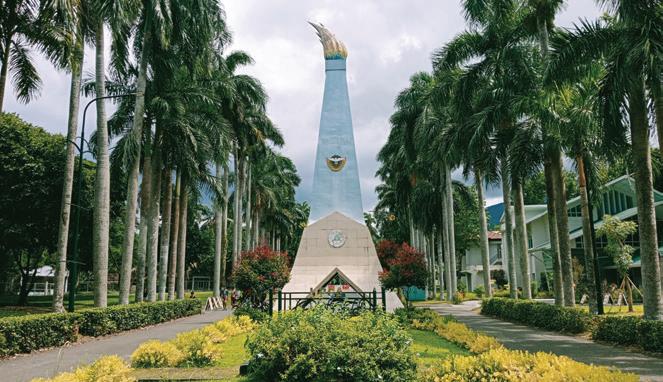
The new partnership will significantly broaden COA’s curricular offerings for students, Hill said, while future faculty exchanges stand to build cross-cultural relationships and open opportunities for novel bioregional studies.
“UPLB faculty are top scholars but even better teachers,” Hill said. “It’s exciting to think that our students could learn from experts in a completely different culture and region.”
The partnership grew out of the longstanding relationship between both schools and more recent discussions between Borden, Hill, and UPLB professors at several conferences of the Society for Human Ecology (SHE), an international body that both Hill and Borden have led. The 2016 SHE conference was held at UPLB.
The partnership offers both schools valuable opportunities for their students and faculty to expand their horizons, Borden said. He also sees it as an essential expansion of COA’s worldview.
“There is a kind of learning that can only happen when people from different nations and cultures spend meaningful time together. The world has become increasingly connected electronically; however, in-person learning and working relationships remain incredibly important,” Borden said. “We love having this island as our home base. Expanding our opportunities around the world of higher education and with other institutions concentrating on human ecology is a big part of the future of the college.”
RICK DUBE Summer Field Studies director
THIAGO ALTAIR FELLEIRA
Post-doc research faculty
PURANJOT KAUR '05
Title IX coordinator & HR support
SARAH KHEIREDDINE Post-doc research faculty
AMY MORLEY Manager of annual fund and major gifts
NATALIE NELSON Night watch
JEFFRY NEUHOUSER Director of internships & career development
ELLIOT SANTAVICCA '20 Archivist/librarian
COLLEGE OF THE ATLANTIC this year announced the creation of a full tuition waiver program for Wabanaki students.
Sparked by the COA Diversity, Equity, and Inclusion Strategic Plan that was passed by All College Meeting in 2021, the waiver follows numerous conversations on campus, including through an informal Indigenous working group, and with Tribal leaders, Bar Harbor’s Abbe Museum, and the Wabanaki Center at the University of Maine.
“For time immemorial, MDI has
provided us with everything we needed to sustain us. Now, it will provide future Wabanaki COA students with sustenance for their minds,” said John Bear Mitchell of the University of Maine Wabanaki Center. “The work that College of Atlantic has done, working with the Wabanaki post-secondary community, will provide a valuable opportunity for our students to gain a unique educational experience. The opportunity College of Atlantic is providing is beyond generous and really considers the importance that higher education plays in our tribal communities.”
The tuition waiver is available for any enrolled COA student who is a Maine Tribal member or a direct descendant of Maine Tribal members. COA will also meet additional demonstrated financial need without loans for Wabanaki students, using the college’s regular institutional financial
aid methodology. In order to be eligible, students must apply and be admitted to COA using the college’s undergraduate admission processes.
"The Wabanaki tuition and fee waiver is something we should have done decades ago, but is nevertheless a piece of very good progress on the work we are doing at COA to collaborate more holistically with our Wabanaki partners," said COA President Darron Collins '92.
"As a college dedicated to a place-based approach to education where our specific geography here on the Maine Coast is crucial to what and how we teach, this work represents a must have for COA and appropriately goes beyond simply acknowledging our historical impact on the Wabanaki people with words spoken before a public event."
Working groups at the college have also discussed, and plan to implement, several other elements to a more robust Indigenous land acknowledgment.


Graupel, an accumulation of time, place, sculpture, and performance, was to find itself frozen on the ice at Little Long Pond, down the road from College of the Atlantic in the village of Seal Harbor, but unseasonably warm weather landed the play back on campus in late winter. Structured as an opera in five acts, performers guided the audience through a frozen landscape that was at once familiar and unknown. The performance was the culmination of A Production Monster Course, a term-long, threecredit class taught by COA Joanne Woodward & Paul Newman Chair in Performing Arts Jodi Baker and arts & design professor Dru Colbert.
By Anara Katz '24
EDUCATOR endorsement is allowing students who hope to further their studies of education and/or teach in countries outside of the US a solid path forward.
For nearly 35 years, COA has offered an education track to students that blends the conceptual framework of human ecology with classes and field work that meet the requirements to be recommended a Maine Teaching Licensure, which is reciprocal in nearly all other US states. As of the 2023-24 academic year, College of the Atlantic is pleased to offer an option for students to graduate with an Educational Studies Endorsement (ESE) attached to their human ecology BA degree. The endorsement reflects a defined set of requirements that mirror the Maine State certification requirements but with greater flexibility for students who have plans to work in education in varied places and perhaps even in varied subjects, and more closely reflects the fact that COA’s student body comprises 25% international
students, many of whom aim to return home to begin their careers.
"This path means an opportunity to grow and learn as a future educator, realize my specific focus within that, and hopefully have my work recognized far beyond the State of Maine," said international ed studies student Ruby Newman '24.
The new track has been approved by the COA Education Studies Committee in collaboration with interested students. There are typically 20–30 students in COA's education program, and, this year, seven have declared an interest in pursuing the new Educational Studies Endorsement track.
“Each ESE will have a focus, and that will direct not only the student's course pathway, but also required fieldwork and an education-based internship," said COA Co-Director of Educational Studies Linda Fuller. “We do hope that through strong communication and discussion about a solid curricular pathway it helps better prepare students to
work in education internationally and/or to pursue a graduate degree in some aspect of education.”
The education studies program at COA blends interdisciplinary education classes, ranging from educational change to curriculum design, that encourage ed studies students to develop a professional education philosophy for themselves as future educators. The ed studies faculty, in conjunction with the Ed Studies Committee, work with students on an individual level to help them create a portfolio of classes and experiences that allow them to go directly into teaching after graduating COA. COA collaborates with local public and private schools, museums, therapeutic riding centers, sexual health clinics, nonprofit organizations, and more to provide students with education experiences that match their interests. COA's educational studies program reinforces human-ecological values of place-based education, service to one's community, and curriculum integration.

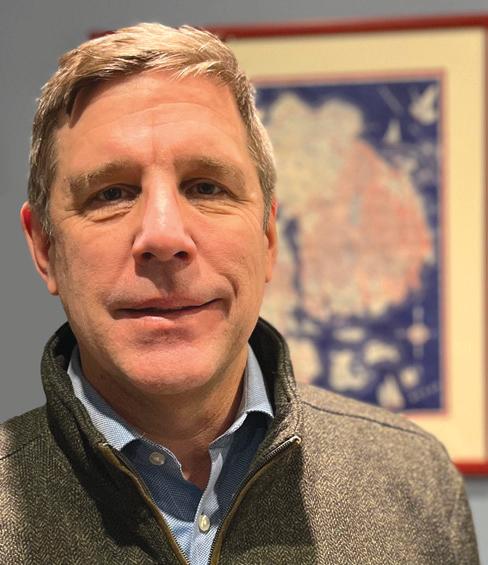
ALLISON FUNDIS is the chief operating officer for Ocean Exploration Trust, where she draws on diverse backgrounds in science, education, and extensive sea-going experience to engage the science community, students, and the public in telepresence-enabled expeditions aboard the trust’s exploration vessel Nautilus. Since 2006, she has led or participated in 50+ expeditions utilizing a variety of deep-sea technologies and submersibles in the Pacific Ocean, Gulf of Mexico, Gulf of California, Caribbean Sea, and Mediterranean Sea.
Before joining Ocean Exploration Trust in 2013, Fundis worked with the National Science Foundation’s Ocean Observatories Initiative at the University of Washington, where she participated in the planning and installation of the US’s largest cabled seafloor observatory in addition to developing resources and programs for students that utilize the observatory’s real-time data. As a former high school teacher, she remains passionate about making authentic opportunities in STEM available to students, educators, and the public through the trust. In 2019, she was recognized as an innovation and technology delegate for the Academy of Achievement and as an IF/ THEN ambassador by the American Association for the Advancement of Science. She is a 2020 Fellow National of the Explorers Club and, in 2021, was named a National Geographic Society Emerging Explorer. She holds an MS in marine geology from University of Florida and a BA in human ecology from College of the Atlantic.
LAPSLEY is a partner in Oliver Wyman’s Health and Life Sciences Practice, based in Boston. Oliver Wyman is a $2B global management consultancy and a subsidiary of Marsh & McLennan. Lapsley co-leads Oliver Wyman’s retail health and distribution strategy teams, as well as focusing on consumer-centric business design, development of value-based arrangements with payers and providers, marketing, new product development, and ancillary benefits. Lapsley is a frequent speaker at industry forums and has presented to America’s Health Insurance Plans, the National Institute for Health Care Management, Alliance of Community Health Plans, the Life Insurance Marketing and Research Association, and the National Institute for Healthcare Leadership, among others.
Lapsley has been at Oliver Wyman since graduating from business school in 1995. Before Oliver Wyman, he was an account supervisor at Grey Advertising in New York City, focusing on consumer-packaged goods. Lapsley holds a BA in history from Harvard University and an MBA from the Kellogg School of Management at Northwestern University. He considers himself fortunate to have been a summer resident of Northeast Harbor, on Mount Desert Island, his entire life and is an active sailor and mountain bike rider. He is married to Karen and has three boys: Tim, Robert, and James.
By Jeremy Powers '24
OF THE ATLANTIC is excited to welcome Su Yin Khor as the new director of the COA writing program and a faculty member in writing and rhetoric. Khor’s past research and pedagogical approach combine to form an educational framework perfect for COA’s interdisciplinary system, and she is looking forward to taking a deep dive into the life of a writing educator at COA.
“I wanted to work at a small school where I could be supported, because the research that I do and the way that I teach, it’s all transdisciplinary. Most schools have departments, and I didn’t really fit into that model of teaching and doing academic work… I kept saying, I need to find a small school where I can do the work that I want to do as a teacher,” she said, “and I finally found this place where everyone is on board with that idea of thinking about the connections between different areas of inquiry.”
Khor grew up in Sweden, where she attended Uppsala University as an undergraduate and stayed on for her graduate work. She holds a BA in history with minors in American studies and Japanese. For her MEd, she studied English and history education with the intention of becoming a high school teacher.
how language, identities, and social issues intersect and shape the way we write.”
When it comes to her pedagogical approach, Khor said, “I see myself more as a facilitator, rather than someone who says, Hey, I’m going to teach all these things, and I have all the information.” Her role as an educator does not preclude her from learning, she said, and she actively encourages students sharing information, stories, and conversation during class.

“I found that I really enjoyed working with older students so I thought that working with college students would suit me better,” she said.
Khor’s views on writing and composition changed with her acceptance into the English master’s program at Penn State, where she specialized in applied linguistics and teaching English as a second or foreign language (TESOL).
“I was introduced to contemporary perspectives on teaching writing that went beyond grammar, and instead contextualized writing in our social worlds and how they intersect with our writing and literacy development,” she said. Her master’s thesis was an analysis of several memoirs written by South Asian authors that highlighted the intersections of identities, multilingualism, and writing.
Khor’s teaching at COA will include skills and concepts that “not only address the micro-level aspects of writing but contextualize them in our social worlds and examine
“Of course, I present factual information about writing. But then we have very deep discussions about what that means, such as different beliefs and ideas that people have and how that complicates writing in the classroom and elsewhere,” she said. “It’s interesting to see how other students learn from each other as well. It really is a community of learning.”
Khor is active on the research front, and has co-authored a book titled The Practical Nature of L2 Teaching: A Conversation Analytic Perspective (Routledge, 2023). She has also written several book chapters, which range from topics such as “Multimodality and writing for international multilingual students: Connecting theory and practice” (Multimodal composition: Faculty development programs and institutional change, Routledge, 2021) and “A collaborative multimodal autoethnography: Women leaders in TESOL (Reimagining influence in TESOL: Deconstructing female leadership identity, forthcoming).
In her free time, Khor enjoys baking, reading mystery novels, and spending time outside. She is enjoying her transition to COA.
“I’m so happy,” she beamed. “I love coming to work. I love just being in this environment. I feel really inspired. Don’t get me wrong, I have a lot of things to do, but I feel good about working through all these things with my students and my colleagues. It’s wonderful, and I feel really, really supported, so I truly am excited to be here. I finally feel at home, you know, and it’s been a long journey.”
By Jeremy Powers '24
AS A DESIGNER with a cross-disciplinary approach to architecture, ecological systems thinking, and teaching, Brook Muller is excited to step into College of the Atlantic’s Charles Eliot Chair in Ecological Planning, Policy, and Design. He will be teaching classes on sustainable architecture, urban planning, and a systems approach to design, and will use his ongoing projects to involve students in real, tangible examples of how principles of design and thinking outside the box can and do apply to the real world.
“I like the pedagogical model of COA, because I’ve been working for decades to try to place sticks of dynamite in the walls of the silos between disciplines at the institutions I’ve been in. And at some point, it’s not that rewarding,” Muller said. “You have to be in a place where you’re encouraged to think that way.”
After graduating from Brown with an environmental science degree, Muller turned his attention to the University of Oregon, where he received a master’s in architecture. He worked in Germany for several years, where he served as co-project leader for the design of the National Institute for Forestry and Nature Research in Wageningen, The Netherlands, a European Union pilot project for environmentally friendly buildings. He has since collaborated with designers and changemakers in Egypt, and most recently served as dean of the Charlotte College of Arts + Architecture at the University of North Carolina.
in the park. In other words, the medium causing harm becomes the very resource to make a new system go; such is the logic of systems-based ecological design.”
He is looking forward to incorporating this project, now in its second stage, into his classroom teaching. “I am so excited about engaging COA students in this work, not only in Cairo, but more broadly in applying ecological design principles to urban contexts in the cause of environmental quality and environmental justice,” he said.

Muller is now collaborating with Megawra Built Environment Collective in Cairo, Egypt, which is a twinship between Megawra, an architectural office specializing in conservation and heritage management, and the Built Environment Collective, an NGO specializing in place-based cultural and urban development. He previously served on the collective’s design team and managed an international field school that led to the recently completed al-Khalifa Heritage and Environment Park, a much-needed green space primarily intended for women and children in the heart of medieval Islamic Cairo.
“The approach involves intercepting water from leaky pipes damaging 13th century shrines that my colleagues are working to restore, treating it, and directing it to vegetation
While deriving a lot of satisfaction from his professional design work, Muller has long been aware of his desire to teach the next generation of ecological thinkers. “I knew from my time in graduate school that teaching had to be central to my future, teaching that embraces a systems-based approach to design with a strong focus on water,” he said.
Muller’s pedagogical approach, he said, rests on “presuming the intelligence of the people you work with. Setting up a framework which is fairly rigorous. Creating a studio environment, where individuals and teams are given this framework and resources that I provide. It functions to help us all understand different ways of thinking through these challenges that we’re confronting.”
“As students or teams start to take on ownership over these things, they evolve in certain kinds of ways, and as the term progresses, it turns from my framework to our framework to your framework. So, it’s this combination of a rigorous framework that meets a certain open-endedness.”
In his free time, Muller likes to “read and walk at the same time. And I will die that way. But you know, if it’s a good excerpt, it’s a good passage, then that’s a good way to go,” he said lightheartedly.
Muller’s recent book, Blue Architecture: Water, Design, and Environmental Futures (University of Texas Press, 2022) is an essential read for anybody interested in water-focused and ecologically minded architecture and urban design. It was a finalist for the 2023 PROSE Award in Architecture and Urban Design.
By Jeremy Powers '24
BIOLOGIST turned painter, Neeraj Sebastian comes to COA with a broad range of life experiences to apply to his teaching and art practice. A soft-spoken man whose intentionality comes across clearly in both the words he says and the paintings he creates, Sebastian’s path to art is an inspiring example of an interdisciplinary approach to life.
He began his journey to art studying molecular biology at Drexel University. Graduating from there with a BS in biological sciences, he began working at the National Center for Biological Sciences in a lab that studied the cell membrane.
“It took me some time to really find what it is I wanted to do. When I was in Philadelphia, I took a painting class at a community art center called Fleisher Art Memorial. And I remember when I was mixing paint on the palette, and then painting with it, I had this feeling that this is what had been missing from my life, but I hadn’t known because I hadn’t worked with oil paint before.”
This sparked a desire to take painting seriously, so Sebastian continued taking classes at Fleischer and then moved back to India, where he built the body of work that he used to apply to graduate school. During his master’s degree education at University of North Carolina, Greensboro, his practice shifted from observational to a more studio-based approach, focusing on invention and synthesis of ideas.
Sebastian's science background undeniably influences his art, and he continually draws parallels between art and science. “The two fields do inform each other,” he said. “I think working in a research lab taught me how to accept failure as part of the process. If an experiment doesn’t work, you have to kind of troubleshoot and change a few things at a time. One of my professors from grad school put it in an interesting way; she talked about both painting and science being speculative processes. You set up these parameters, and then you investigate. You don’t really know where you’re going.”

This process of speculation, experimentation, and learning also applies to his pedagogy and methods of teaching painting. “I feel like I learn so much when I’m in the classroom, because when I’m by myself, maybe there are some formulae that you sort of use to start a composition, or to place forms, or to establish some of these relationships. In the classroom, it’s always nice because working with the students helps me think about why I make certain decisions. And I think in the classroom, especially in the concentrated 10-week term we have here, I think my priority is to make a lot of quick drawings and paintings, so that the students can think about the big picture, the larger organization of colors and forms,” he said.
“That transition I remember being quite uncomfortable and difficult because I was always worried. What if I get the anatomy wrong of the figures? What if I get the lighting wrong? And then, I think, by the end of grad school I realized it doesn’t matter because the whole thing is made up,” he said. “The faculty members at UNC Greensboro gave me the space to experiment, be vulnerable, and to fail—and I failed often; there was a lot of experimentation and there were a lot of bad paintings before things got interesting. And I hope to create a similar environment for students here at COA—to allow them to experiment, take risks, and surprise me and themselves.”
His studio, located in the maze of the Arts and Sciences building, is spacious, and he plans on incorporating the space into his teaching. “My plan is to start working on my own paintings within this space. Because an important part of grad school for me was seeing my professor’s studio, how these paintings came together, so I think it’s useful for the students to see my studio, my workspace.”
In his free time, Sebastian said, he likes to watch movies and also enjoys reading. Mostly, though, he has plans to paint. When asked on how his art evolves during the creative process, he replied that it’s all about recognizing and making peace with the unknown. “Once a painting comes to this moment of transition, it could go in many, multiple directions. There’s no right or wrong way to do it. It could end up in a bunch of different ways.”


By Devin Connor '12

OUR INTRODUCTION was marked by a modest handshake and a brief exchange of glances. Unassuming in attire, his daily uniform consisted of monotone tan workwear and a sunhat. Like a caricature of neutrality, his appearance revealed nothing of his person. In the earliest days, he worked on preliminary layouts for the line alone. A quiet enigma in the college landscape, he carefully pulled lengths of hose into graceful curves, the indifferent subject of many a passing gaze. The unpretentious fi gure in tan worked at his strange labor with the slow and steady intent of a tradesman. It was all very obscure at fi rst, Andy and the project. The process was yet to be developed, as was the shape and trajectory of the line itself. We might mock it up in stones or simply follow the curving hose. As local crews worked on preliminary stone cutting and I on basework and logistical concerns, my nerves mounted to a crescendo sensing the impending moment when curb would meet earth—the moment of inception. During the setting of those fi rst few stones we played with excited apprehension. As I delved into my element, so did Andy into his. Within 20 feet of laying the winding curbstones, a notion of the art piece emerged. Along with that, from
fi rst stone to last there evolved a method and series of refi nements that would express that notion gracefully.
The work and the process were grueling. These days, the curbs lining our roadways are set in concrete. Like everything in the modern world, the process has been systemized to increase production and limit the need for skilled labor. There is no question of what direction the curb will take; the curb follows the road. Not so with the obscure curb line that we would chase. We set our curbs into crushed stone with a three-foot hammer and exuberant force. The effort needed to set each curb to the desired height was immense. The ground would shake 20 feet away with the force of hammer meeting stone, only to drop the curb by a paltry fraction of an inch. Each stone was painstakingly cut, and the ends prepared to ever-more-nuanced specifi cations before being cut again during setting for a precision fit. The process required a great effort, and, with bloody knuckles and anguished bodies, an even greater focus.
Road Line was an excruciating undertaking for all involved, perhaps none so much as the artist himself. There was an unrelenting sense of conflict between




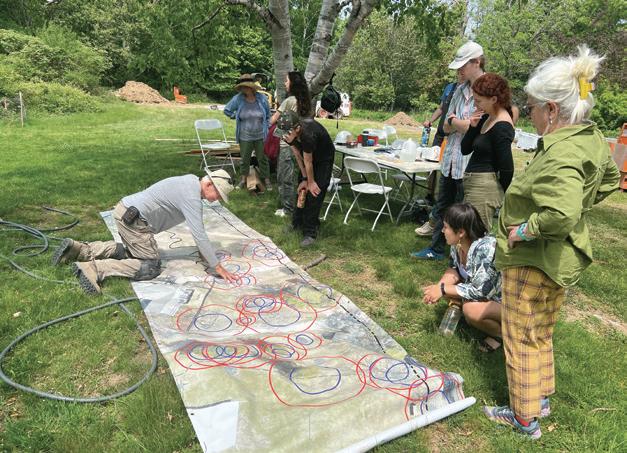
the needs of the art piece, landscape, and community. Not to mention the budget, timeline, and the pursuit of form. We faced valid concerns regarding tree protection, accessibility of road crossings, and use impacts. Andy had a clear desire to respect and encourage human engagement with the piece, open to input of how it might inhibit or enrich the experience of different beholders. But the challenges would become more abstract as judgements that questioned the piece’s value were brought to the surface. One protest chalked on a stone read, This is not human ecology. I've often wondered what fed this notion, and if the faceless judge anticipated the haunting feeling their protest would impart. As if to soften the blow, another of the writings insisted, We respect Andy. The laboring masons who discovered the messages wondered if that respect extended to us. And yet these challenges (and challengers) steered the project as components of a greater ecosystem affecting its articulation. The form of the piece was guided as much by the cooing, roars, and migration patterns of humans on campus as by the more conspicuous undulation of landforms. As a mechanism for bringing about Andy’s vision, I began to recognize the work as existing within this greater context. The many voices and forces weighing on us were inadvertent forces of nature acting on the formation of the art itself.
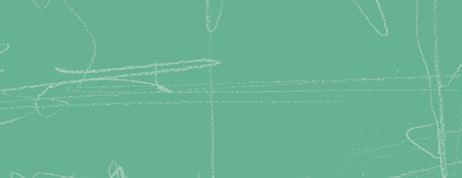
Andy's greatest personal impact has been to awaken me to the sanctity of process.
From my position as head mason, there was a freedom to behold the project in a way truly distinct from my experience at the helm of creative work. I was able to surrender to the process, trusting the governance of form to our leader. This was the meat of the project for me, existing in the realm of this dichotomy between the perceived art form and the physical process of creating it. Set in the landscape, the sculpture appears effortless, as if its form was ordained in the natural order of things. In reality, it is anything but. Only through massive effort could we create this thing whose beauty relies entirely on its perceived effortlessness. Focusing on art itself while actualizing it through a physically intense and masochistic process was revelatory. Working with Andy as he toiled over the form, our small installation crew soon found ourselves in fl uent accord: This stone isn't the right radius. This whole run needs to be taken out and reworked. What began as a concept in Andy’s mind became this living thing whose needs we could sense intuitively and provide for enthusiastically. Despite the physical cost of manipulating these unforgiving materials, we were acutely aware of something sacred in this process and so would never think to protest. What a gift, to wade through this chaos and toil, and to fi nd amongst our core crew a singular focus on that sacred point which, through its carefully controlled meandering through the universe, constituted the artwork.
Andy's greatest personal impact has been to awaken me to the sanctity of process. After a life of putting so much concern and ego into fi nished work, this project leads me to believe that it is the action of engaging the universe in expression which aligns the artist with something essential. Andy appears to spend the majority of his life nurturing this phenomenon, embracing the pulse of




creation through near constant immersion and expression of it. Throughout the project he would disappear in quiet moments to the shore to create ephemeral works. Some were in keeping with what you might imagine— arrangements of stones and organic ephemera. Others went deeper. He did a series of recordings burying himself in seaweed, plunging blindly into the bugs, crabs, and other life as the tide crashed in for nearly an hour.

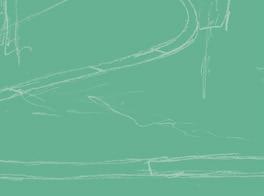
The work is the result of a process of engaging with context in the deepest sense, in landform, material and culture. He absorbs every bit of context—the history of local quarry workers and curb setters, the nuanced landforms of the campus, the tides, creatures, and very soul of the place.


In working with Andy, the disembodied notion of the human and nature that plagues the modern perspective is resolved. Andy, adrift in the seaweed, can hardly be abstracted from nature. He rejects being asked to “design” in the human realm, refusing to manufacture context for
his own work. He is not the arbiter or architect of the world his art occupies, but a creature whose engagement with the world results in art. The work is the result of a process of engaging with context in the deepest sense, in landform, material and culture. He absorbs every bit of context—the history of local quarry workers and curb setters, the nuanced landforms of the campus, the tides, creatures, and very soul of the place. With this immense sense of place he sets his intention, engaging in physical process as a conduit for the expression of something universal.
In the end, I’m left with a growing sense that this yearning we all have to create as individuals is connected to something essential wanting to be expressed. After years of unrelenting seriousness in my own work, it is Andy’s playful engagement with the natural world which inspires me. His work is an extension of the care he gives to his own soul. As he baptizes himself in the tides of nature, it becomes nearly impossible for his artistic expression to avoid revealing some natural principle. In a sense, Andy is an artist by species, and his artworks are the footprints left from his deep and unconventional engagement with his environment. As I sit in reflection, months on, I look to my masons and see a similar principle expressed. While burdened by perception of our class and creed, we too spend our days chasing lines through space, leaving tracks and traces that look an awful lot like art.
Andy Goldsworthy's 1,500-foot-long Road Line (2023) is the artist's fi rst permanent installation in the State of Maine. Devin Connor '12, founding owner of The Garden Artisans, served as chief mason on the project.
Edited by Alexa Kelly


Excerpt from Smarter Planet or Wiser Earth? Dialogue and Collaboration in the Era of Artificial Intelligence (Producciones de La Hamaca, 2023) by COA philosophy professor Gray Cox ('71).
Smarter Planet or Wiser Earth?, by College of the Atlantic philosophy professor Gray Cox ('71), argues new Artificial Intelligence technology is moving beyond classic Turing machines that rely on monological inference towards “Turing children” that may become capable of dialogical reasoning of the sorts used in negotiation, group problem solving, and conflict resolution. It argues this will reframe how we think about moral reasoning in general and the challenges of AI ethics in particular.
THE NEW GENERATIVE AIs use neural nets and reinforcement learning methods to develop more conversational AI that can start to imitate and in some ways perform many of the functions of a person engaging in dialogue. They pose questions, respond to inquiries, synthesize materials, present responses in different styles and from different points of view, generate appropriate images on request, and, more generally, behave in ways that seem sensitive to context in the ways in which human conversational partners do. The systems may still lack a variety of capacities humans can have. However, with each skill they do acquire, they bring to bear massive data and hardware that can outclass humans. Once they learn to play Go, code in Python, create paintings in the style of Salvador Dali, or take the bar exam, they can bring massive memory and speed to their responses. The results include increasingly powerful systems that pose serious ethical and existential concerns for humans.
At the heart of those ethical and existential issues lies a puzzle with two often ignored wrinkles. It is a puzzle in AI research that is now referred to as the “alignment problem” but has an older and in some ways more illuminating name, the “friendly AI problem.” Visions of
it have long loomed in our collective imaginations in science fiction stories about terminators, borg, and the matrix. It is commonly framed as the challenge of ensuring that ever more powerful AI systems operate on values that are aligned with humans’ values so that they do not run off the rails and start doing harm and creating catastrophic risks. The idea is that the system should be friendly to the humans who are creating it.
Framing it as a problem of friendship can help spark concerns about two wrinkles in the problematic. First, it is clear that we do not simply want to ensure that the AI are friendly to whoever creates or owns them. What if a rogue state or ruthless corporation is in that role? That is not what we want. We want to ensure the AI is friendly to people who are good rather than bad or, at the least, friendly to those who are trying to do what is right. We want it to favor folks working for something like a more just, peaceful, resilient planet instead of the opposite.
But that takes us to a second wrinkle. Suppose we do develop “Turing children” that are capable of dialogue and self-improvement, and they grow to become extremely powerful and super-intelligent systems that are friendly to the good and promote a more just, peaceful, resilient planet. What will they make of us? How likely are they to be friendly to a population of Homo sapiens that permits unnecessary mass poverty and illness to continue, runs factory farms for pigs in brutal ways, precipitates the sixth great extinction, runs an arms race in weapons of mass destruction, and actively promotes technologies that are becoming entirely out of control? What would we need to do


There’s a Change That’s a Comin’
differently in order to be worthy of the friendship of an artificial super intelligence that is genuinely ethical?
Just as it takes a village to raise a child, it takes an ethical village to raise an ethical child. To deal with the ethical and existential challenges that ever more powerful AI poses, it is necessary to consider the moral values and the structures of reasoning that govern our global village. How do the institutions of our economic, political, and technological institutions function—and malfunction? In reasoning about ethical concerns, how do we do so when we are at our best? How might that provide models reforming the major institutions of our global village? How might it provide ways of guiding research and development in AI and the moral values and principles of reasoning it embodies? This book undertakes a journey to answer these questions.

By Kiera O’Brien '18
HAJJA NASEEM '10 never aspired to politics. “When I was younger, I always had so many ideas of what I wanted to be,” shares Naseem. “Being a state minister was never one of them!”
Growing up in the Maldives under a 30-year dictatorship, she witnessed firsthand the maturation of a popular democratic opposition movement that eventually led to a peaceful transfer of power and the country’s first multiparty election in 2008.
At the time, she never imagined that she would one day serve her young democracy as Minister of State for Environment, Climate Change, and Technology; a position she held until fall of 2023 when her party lost re-election. Of her five years in office, Naseem reflects: “It was a transformative experience—I am relatively young, and a woman, in what is still a fairly conservative country. It wasn’t easy, and I never imagined it, but I’m proud of what I accomplished.”
As minister, Naseem not only oversaw all aspects of the small island nation’s domestic policies on climate and energy but also had the responsibility of serving as a climate diplomat for her country at the annual Conference of the Parties (COP) to the UN Framework Convention on Climate
Change. “All the jargon and the commas in the bilateral agreements have a direct impact on people’s lives, so even though it can feel very slow and very painstaking, and even though we need to be more ambitious, I’m very happy to have played a leadership role in these conversations.”
She is especially proud of her efforts as a chief negotiator for the Maldives as part of the Alliance of Small Island States. “It's really important to build collective capabilities and try to address the impacts of climate change with collective action,” emphasizes Naseem. In a 2023 op-ed published in advance of the COP in Dubai, Naseem wrote forcefully about the need to address the “loss and damage” caused by climate change that is already being faced by small island nations like the Maldives. She writes, “Despite our negligible contribution to global greenhouse gas emissions, Maldivians are disproportionately bearing the brunt of climate change's consequences.” And they are bearing them now.
“Loss and damage cannot simply be solved with a fund to offset the economic impacts of climate change. There are incalculable losses of culture, of homeland, losses that are not
strictly economic,” Naseem explains. “Loss and damage demands that we develop a mosaic of solutions that account for multiple contexts, angles, and perspectives.” Such a framework, Naseem believes, is precisely “what we are taught at COA. This idea of building a ‘mosaic of solutions’ to address complex, multifaceted problems really sums up not only what I have been working on for the past five years as a minister, but also what I learned at COA.”
Since returning home to the Maldives from the latest COP in Dubai, Naseem has been enjoying a brief respite from her duties as a climate diplomat and considering her next steps following the 2023 election results. She hasn’t exactly been resting, however. She currently serves as a senior adviser on loss, damage, and climate negotiations for the International Peace Institute (NY, USA). She’s also been enjoying extra time spent with her daughter, three-year-old Arin. When I ask what advice she might give to other young climate negotiators and leaders, she doesn’t hesitate: “You have to find ways to create joy. It’s challenging work, and things don’t always work out, so it’s important to laugh, to have fun, where and when you can.”

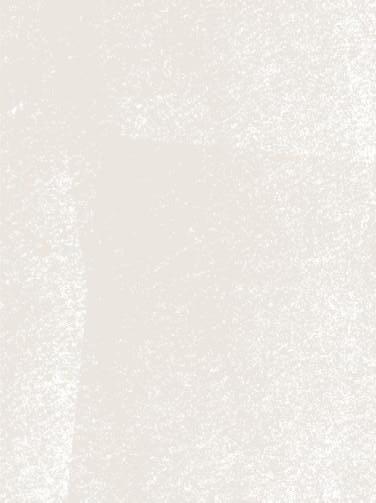
By Fern Paltrow '24
Bateau Press is a small press / literary journal currently housed at COA under the editorship of Dan Mahoney. Every couple of years, Bateau cycles in a new crop of student editors who read manuscripts, help select publications, design books,

sew chapbooks, contact brick and mortar bookstores, run Bateau’s social media accounts, and so forth. In sum, the students are what make running a small press possible at COA. Fern is one of Bateau’s student editors and an
INLATE DECEMBER , I had the privilege and utmost pleasure of sitting down for a Zoom interview with poet and author Jack Giaour to discuss his soon-to-bepublished chapbook, hunting the bugs.


hunting the bugs is the winner of the 2023/2024 BOOM Chapbook Competition, held yearly by Bateau Press, the letterpress publisher directed by our very own (& most beloved) COA lecturer [and COA Magazine editor] Dan Mahoney. hunting the bugs is available for purchase at bateaupress.com and select bookstores across the United States as of April 1. All chapbooks are hand sewn, with a cover designed by artist Chris Fritton. Giaour is a powerful emerging voice in the literary realm, and I hope that readers of this interview (and also people who don’t read this interview!) will consider reading his work––I can’t say enough good things about it.

FERN PALTROW '24: First, I want to congratulate you on winning the BOOM Chapbook Competition. We had over 200 submissions, and yours was a standout from the very beginning. I feel really grateful that you submitted to us and trusted Bateau with your work.
JACK GIAOUR: Oh, thank you so much.
FP: hunting the bugs was one of the first manuscripts I read, and I immediately fell in love. It was a very moving, emotional read, but it was also so funny! I guess, as a place to start, what inspired you to write hunting the bugs, and how long did the process take?
JG: I guess the core of that book is “manna,” right? The first sequence poem. I started writing the earliest drafts of what would become that poem over COVID because I was reading a lot about... I laugh at myself a little bit, but I was reading this big book about biochemical warfare in Afghanistan and Vietnam, and that was really dark and disturbing. So I was writing poetry to work through that. But as I started writing and did more reading and investigating and thinking, the poem obviously got away. So it's not about biochemical warfare anymore.

early advocate of hunting the bugs. The letterpress covers for this year’s winner were designed and printed by Chris Fritton. To find out more about the press, Jack Giaour, or Chris Fritton, check out the Bateau website here: bateaupress.com
I started thinking lucidly about the relationship between the military and masculinity, and specifically how queer men get caught in the middle. I kept running into stories about people who had joined the US military because they were gay, because they were trans, because they weren't accepted in their home communities, because the military offered the only pathway that they had toward education. But I also found that a lot of queer narratives in the military were not necessarily about people looking for economic or educational opportunities, but for legitimacy. People felt that having a military background secured their masculinity.


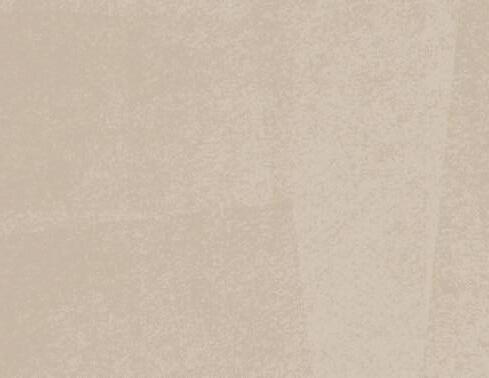

The bug, whether it’s a computer bug or an actual bug or a secret agent bug… It's an unwanted presence, right? It's something that has infested your home or been planted in your intimate space, that you can't get rid of.
Take, for example, Vietnam vets. Things were so fraught and complicated for them, but one thing they didn’t have to worry about was people questioning their manhood. You could be gay under the radar if you were a vet.
I started reading and reading, and I got stuck on that theme.
I'm not a vet. So I was very conscious of that while writing that poem. I didn't want it to appropriate anybody's experience or steal anybody's story. Actually, a lot of the scenes in the poem are scenes from my own life, but obviously not the military scenes. But each




Jack Giaour, author of hunting the bugs
character has an anecdote from their personal life, and those all do come from my own personal experience.

I was reading and thinking a lot about the US military. But my first male partner was Israeli. He was a combat vet, had terrible PTSD, had a lot of problems that he inherited from his combat time. He had a very complicated relationship with his sexuality. That relationship didn't last because he went back to Israel, and effectively went back into the closet. He said to me, This was fun and I care about you, but my family and friends can't know about you. He felt that he could not safely be openly gay in Israel, that he would lose his credibility and all of his relationships. That experience ended up being in the poem as well, and was in the back of my head as I was doing all of this reading about other queer experiences in the US military.
FP: Queer US military history is a subject that is not widely documented, but I imagine there is a long history there.
JG: I was thinking again about this weird relationship between like, Okay, if I join the military, then people won't necessarily know that I'm gay, right? Or, If I join the military, this is a way for me to transition. I found that a lot of trans people had joined the military either as a way to transition or as a way to… If people were having feelings that maybe they were trans-feminine or trans-female, they were thinking, Okay, I'm gonna join the military, and that's gonna make me a man, right?
A lot of the wars that I was reading about were contemporary conflicts. So, Afghanistan, Ukraine, and Syria. I started reading about experiences in the US military, but obviously on the other side of those conflicts is the Russian military and the Russian military
experience. I found a lot of interesting echoes between American experiences and Russian experiences of the same wars. Reading accounts from both sides felt like reading two sides of the same coin. I'm looking at these two contemporary world powers wreaking havoc over and over again in different parts of the world, and watching Afghanistan and then Syria and now Ukraine get caught in what is essentially an economic conflict. I’m looking at the devastation these wars wreak on the soldiers who are fighting them, and on the citizens of the nations that act as the aggressor or oppressor.
That poem was very, very long and very heavy, and I ended up cutting it down. I think it’s much better that way. The poems around that poem in hunting the bugs come from all over the place. Some of them I wrote the same month that I submitted the chapbook. Some of them were very old poems that I had reworked. But I think they all spoke to things I couldn’t stop thinking about. That’s why I gave it that title. The bug, whether it’s a computer bug or an actual bug or a secret agent bug… It's an unwanted presence, right? It's something that has infested your home or been planted in your intimate space, that you can't get rid of. So there are lots of bugs in that poem, whether it's the KGB, or the mosquito in the poem to Gabriel, or even just intrusive thoughts––there were a lot of things that I was working through that I felt like I couldn't get out of my head.



FP: You do this thing throughout “manna” where you present characters who, on the surface, are cold, emotionless, dangerous individuals, people we’d like to think we have nothing in common with, but you imbue them with humanity, and give them very writerly qualities. Stephen is a particularly striking example of this because you introduce him as someone who visits quite a lot of death on unsuspecting innocents, and suggest that even the people who know him conceive of him as unsentimental and incapable of remorse. But your vision of Stephen is more nuanced; you write him as someone who has a clear literary sensibility and strong sensitivity to beauty, even in the precise moments that he drops bombs from his plane.
One thread I picked up on was this notion that perhaps there is a poet in everyone; perhaps everyone has this little human desire to write their story down, to wield a pen. Was that your intention?
JG: Yes. Kind of. You put it so well, and I would love to say that I was very lucidly doing that, but not necessarily. I had this strong engagement with people who were trying to tell their stories or who were trying to explain or work through what had happened to them, what they had seen, how they had ended up where they ended up. I think a lot of times people end up in positions of power and don't realize how much power they have until they've used it destructively. And then there's this moment of like, Oh my God. How did I get


here? How did this happen? How did I become this? And I was definitely interested in that moment.
FP: I feel, with hunting the bugs, that you have done so much to capture the ruins we find ourselves in. I think your manuscript is extremely timely, though I desperately wish that it wasn’t. There are these lines about eggshell cities, you know, on to the next eggshell city, and here we are watching these horrors unfold on our phones, seeing Gaza completely leveled and destroyed; we are bearing witness to the incalculable human suffering and loss that makes the eggshell city a feasible concept. To me the most poignant, heartbreaking lines of your whole manuscript are:

there’s no
What was in your head when you wrote these lines?
JG: At that point, I was so tired. I had been engaging so deeply. I'd been learning about biochemical warfare and listening to these veteran stories. And then I was trying to get more civilian voices in there, so I was reading refugee accounts and then, while I was writing this manuscript, the US pulled out of Afghanistan, and that created a power vacuum, and the Taliban took over. The Syrian Civil War is ongoing––the US has pulled out of it, but it's still happening. And I think a lot of people don't realize that. So I'm following these wars or these conflicts that are still happening, that don't show up on the news, that are kind of old news, right? I was thinking, God, these conflicts are trendy for a while, and then they go away in the American public eye.
But for the people who live there, they do not go away. In fact, they're still happening with just as much horror


and violence and destruction as they were when the media eye was on them. So that creeped me out and saddened me. Russia invaded Ukraine, and all of a sudden we had a brand new conflict all over the news. And so of course that line is about Ukraine. And now we've just had this horrible resurgence of conflict in Israel. A lot of people feel like this is new, right? They haven't been thinking about Israel and Palestine. So now it's a big news story and it feels fresh, like something that happened out of nowhere. But it's not, right? That conflict has always been there. Of course, what happened with Hamas is really horrific. And what we're seeing in Gaza now is unprecedented. But this unprecedented horror did not come out of nowhere. This conflict has been bubbling along, whether the media's been paying attention to it or not.
I'm exhausted with the media inundation on the one hand, but then also feeling like, okay, if we stop paying attention to this, that doesn't mean that it goes away. I’m trying to reconcile the feeling of not wanting to engage with it anymore, but I also feel like I'm responsible to engage with it, if only to just witness it and acknowledge that it's happening.
FP: It's interesting to me that you were talking about literal news, because when I read those lines, it made me think about history repeating itself, and how we seem unable to learn. We just keep repeating the same mistakes, with grave, cascading consequences. In a similar vein, my favorite poem in the whole series is “the water.” The closing lines of this poem also landed really hard for me:

that his eye pain and watery eyes belong on a different kind of chart that these words answer a different kind of question
a question that no one is asking
It made me think of politically engineered silences and gaps.
I'm exhausted with the media inundation on the one hand, but then also feeling like, okay, if we stop paying attention to this, that doesn't mean that it goes away.

JG: So much in that poem, or in that book, but that poem specifically, is thinking about power dynamics. Who gets to decide what? Here’s this person who on the one hand is some kind of survivor in this conflict but who's dependent on foreign aid, who speaks a language that's not his native language. But how much is that aid actually helping? Why does that aid have to be there in the first place? How complicit is the nation that's sending the aid? How complicit is the nation that's sending the most aid? How complicit is the nation involved in the conflict in the first place? So yeah, you're absolutely right. But none of these poems are riddles. I'm okay with people bringing their own meaning to the


poems. It's okay for my words to carry your meaning, right? Once it's in the hands of a reader, now those poems are the reader's poems. I'm letting them go into the world.
FP: How is hunting the bugs rooted in queer and trans literary histories? How does your work seek to carry forth those legacies?
JG: I think on the one hand we have a lot of queer people in what we would consider our canon. But we also have a lot of queer people that get bounced out of that canon. And a lot of in-between. With my book specifically, one of the writers that I really engaged with was Virginia Woolf, who is not American, but British, but who definitely had some queer tendencies. One of her most beautiful books is Jacob’s Room. She was dealing with the after-effects of World War I and challenging the narrative of the soldier as hero, but without demonizing the soldier. The entire novel is the life of Jacob, who's a pretty normal person, and then gets killed in World War I, and that's kind of it. That's the whole book. I think the point that she was trying to get at is that soldiers are people, and we're sending normal people in droves to be slaughtered, over what? What is being accomplished with this?



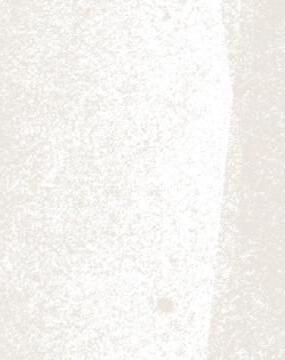
I was thinking a lot about Virginia Woolf as a queer writer who, like me, is not a vet and never went to war herself, but was surrounded by people who were affected by these conflicts. She refused to engage with it in a way that the rest of the literary world seemed to expect.
Also, Nightboat Books has two anthologies of trans poets and poetics: Troubling the Line and We Want It All. Those anthologies are incredible. I, as a trans writer, am constantly looking for other trans voices. And we are hard to find, especially historically. Unfortunately, sometimes that's intentional. Before the more recent queer liberation and Stonewall and all of this, I think a lot of trans people intentionally flew under the radar; they didn’t want to be seen as trans.


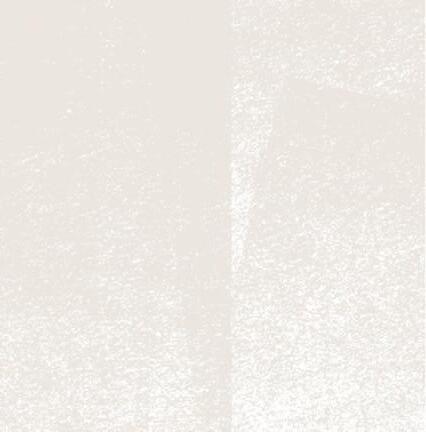
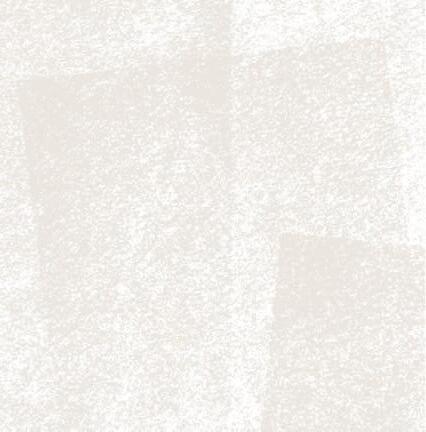

Finding trans people in the historical and the literary record in particular can be frustrating. So having these anthologies of contemporary trans writers was great. But what I was really taking from those anthologies was the way that trans writers write about the body. And so in hunting the bugs I was trying to insert the physicality of the speaker into the narrative. The speaker's body is an important part of the poem, of every poem, or is something that should be considered in the poem. Whether it's the body as a sexual presence, a potential corpse, or the physical encasing of our soul, right? In “why i can’t get out of bed,” you have a narrator that's contemplating killing themself. But a big part of the suicidal ideation is about your body and potentially wanting to be released from it, right?
A third queer source of inspiration is an anthology called Out of the Blue that was published in San Francisco in the '90s. It’s an anthology of queer Russian poets that starts in the early 19th century and goes all the way up to the '90s when the anthology was published. It was engaging with mostly gay male narratives. There are some lesbian poets in that anthology but it's mostly gay men. But I was engaging with them from this different perspective, right? From a Russian perspective and a Russian historical context. I was trying to escape an American-centric queer poetics. I wanted to engage with a more international queer poetics that moves outside of Anglo-America.


FP: The book certainly points in that direction. Anything else you would like to add before we close?
JG: I'm glad that the book is where it is. It feels like it's in good hands. And it feels like it's growing, right? Having a cover, and paper samples, it's... I don't know, it's very exciting to see it become a physical thing, not just a strange hallucination that I've had in my head for a while.



tonight forget how time rebuilds experience tonight just decompose and let the blackout envelope you

no matter the transmission from mind to telephone screen the signal’s always shit the boy on netflix clutches the man with the x-ray eyes once i fell in love with a cop and he loved me back the snake chokes on the mouse most hunts are unsuccessful and what i mean by that is life in the underworld is not what you think it is
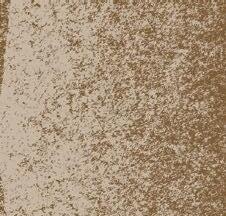
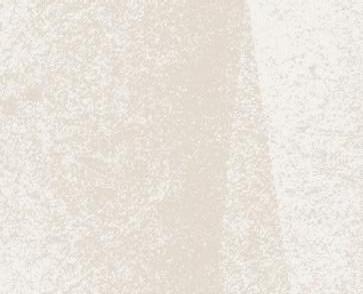
it’s the sun that gives the shadows their shapes and what i mean by that is his love for me did not stop my cop from being a fascist
so tonight turn off the lights tonight trade underwater for an autumn forest just stand there and stare into the canopy


listen from the bottoms of your feet to the sighing of the leaves that once would sway overhead for miles and miles in every direction your eyes may water but never again let them run the time to cry has passed
—Jack
Giaour from hunting the bugs, Bateau Press 2024





By Meesha Goldberg '08
HOW DOES ONE deepen kinship with the land despite dislocation from one’s ancestral home and culture?
This is the central question of my interdisciplinary body of work, which inquires into a land ethic of the Korean Diaspora, seeking resonance between ancestral culture and life on American soil. At the root of the artwork I seek to offer a critique of the American empire, the violence enacted on Indigenous people of Turtle Island, and the disruption of the indigeneity of the Korean Diaspora through war and neocolonial dominance. While America cannot become a motherland for the settler, and belonging to one’s ancestral homeland may be forever severed, one’s body remains the sacred site from where to honor kinship to the sources of life.
The Daughterland paintings depict these bodies in traditional dress overfl owing with seasonal life: summer’s seed, fall’s root, winter’s rest. The series expresses ancestral grief as the faceless women wield the blades of the shaman, the fi eldwoman’s sickle, antlers of the buck, and yet they tenderly carry life, embodying complete engagement with the fl ow of nature. The cover painting, From the Mountaintop, an illustration in the English translation of the myth “Budoji,” depicts an ancient ceremony on a mountaintop altar I witnessed during my fi rst trip to Korea in 2022. By reaching back through the root of lineage, perhaps a vision for the future may be retrieved. Despite displacement from a motherland, the desecration of wild and sacred places, and the forgetting of names and songs, the persistent earth still offers itself through the generations.










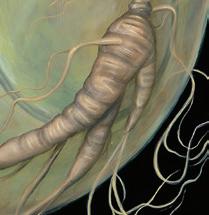



Meesha Goldberg is a Korean American poet and artist living in Charlottesville, VA. She graduated from College of the Atlantic in 2008. Her experiences growing food, serving as an activist, and journeying to sacred places have made her a powerful advocate for the Earth. Goldberg has exhibited her work in solo shows around the country, with her debut poetry chapbook, The Seed is Waiting in the Dark, forthcoming in 2024 from Finishing Line Press. Her art crosses the boundaries of genre to both experience and express transformational repair. Performance, ritual, painting, film, costume, and poetry merge in durational, placebased works and gallery installations that insist upon the re-enchantment of the world.









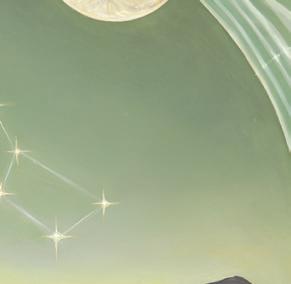












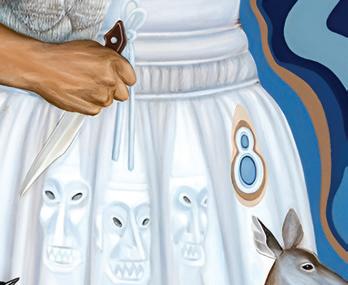

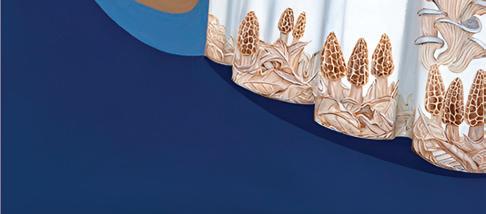
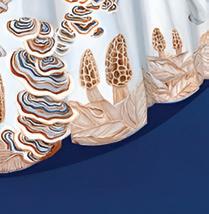

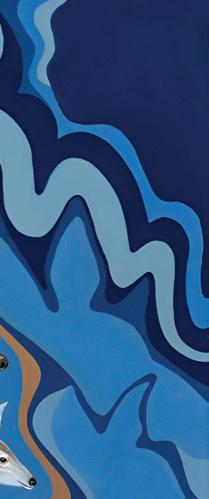


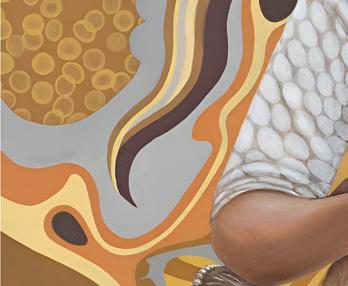




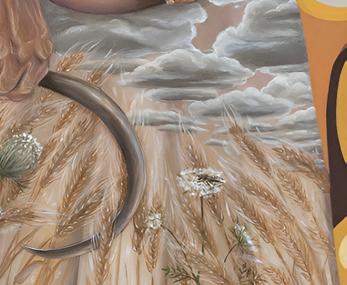
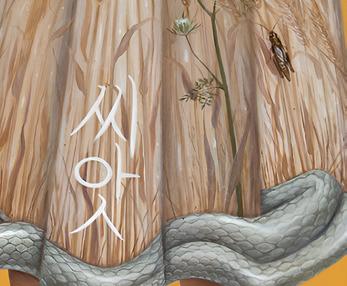

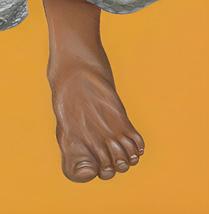



We imagined our relatives still put us anonymously into prayers on lunar new year, but there was no telling. There was no telling if our ancestors would descend eighteen hours just to reach us speaking English In the fiction of a new world we fragmented our longing but as we are mountainless in that wound imagination festered Nothing suggested such but we imagined ourselves remembered & that myth’s sore legs could walk us

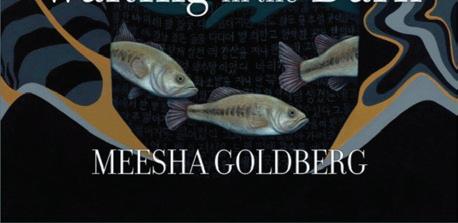
Our American cloud mountain, Septembered & berried
We imagined how grandmothers could guide us the blindfolded though we did not offer a single persimmon though wild tigers stalked us out of our dreams though we ripped out every root with great carelessness our longing is holy because we did not abandon it

All ginseng gatherers 심마니 feel the same if they don’t find any for a couple days They feel the urge to give up
That’s when the mountain spirit gives you one That’s what motivates us to keep going


The form of this piece is inspired by a long-running feature in the The Wire magazine called “Invisible Jukebox.” For this feature, an interviewer plays the interviewee a series of records they are asked to comment on—with no prior knowledge of what they are about to hear.
Tested by: Dan Mahoney / Images supplied by: Darron Collins '92
DAN MAHONEY: Ok, here we go.
DARRON COLLINS '92: Ok. [immediately] "Brick House?"
No, wait... "Fire." Ohio Players. And now I can see it on your screen.
DM: That is not supposed to happen. [laughter] Ok. You are a firefighter in Bar Harbor. How did that happen?
DC: I think I was a kid that always wanted to be a firefighter. Then I was doing my graduate degree at Tulane in anthropology and was having an existential crisis writing my dissertation. I remember this time where I turned to my then girlfriend, Karen Grabow, and said, "You know what, I'm done with this graduate stuff. I'm going to be a firefighter."
DM: The existential crisis of dissertation writing... As in: Why did I do this to myself?
DC: Right. And then we have a long relationship between COA and the Bar Harbor Fire Department. Roc

Caivano, who was an early faculty member, served as a volunteer for 25 years. Dan Daigle (director of building and grounds at COA) is the captain of the volunteer callin force. And of course, Zach Soares '00 has also been a big and important part of that team. And at some point about two and a half, three years ago, in the middle of COVID I decided that I needed to show up to that… and we have this really, obviously, important relationship with fire, generally on Mount Desert Island. And, in many ways, COA was created as a response to the 1947 fire that devastated a lot of the island community.
DM: How so?
DC: Well, COA was a response to the fire that destroyed a third of the island in 1947, as in, What can COA do to help revitalize Mount Desert Island after that horrible fire? But then we also had our own fire in 1983, where the center of campus was burned to the ground. I just finished writing an article for Chebacco magazine about this event (page 48), which was one of the most difficult in the college's history.
DM: Has being the president of COA helped or hindered in your firefighting career?
DC: The amazing thing about COA is having the ability and flexibility to freelance a little bit… to make things up as you go along, and to bob and weave and pivot and be creative with how you approach problems. But that is exactly the opposite of the way a fire station works. When a building is burning down, the last thing you want is someone making it up as they go along. People get hurt that way. I remember being at the fire up across the street (the Bluenose Inn) and saying, Hey, I'm going to go help this guy out with whatever. And being effectively grabbed by the collar and having someone say, No, no you're not going to do that. You stay here, and when I tell you to do something, you do it. Which is great. Having that balance is necessary. I also love working with the men and women at the fire station. It is, well, it keeps it real. It keeps me grounded.
DC: I'm going to start to weep here. It's Springsteen from Nebraska... No, no it's The River.
DM: Funny, I was trying to decide what Springsteen to play a song from. I was thinking Nebraska or The River.
DC: Both great albums.
DM: Right. Springsteen. New Jersey. Where you're from.
DC: Parsippany, New Jersey, which is north central New Jersey. Not Springsteen country but close enough. Parsippany at one point was mentioned in a Seinfeld episode, and that was about the extent of how we entered popular culture. But the funny thing is I never liked Bruce Springsteen growing up until I came to COA. COA is when I really started listening to Springsteen a lot with Genevieve Hatcher '94 and Eric Hitzel '92, who were some of my classmates here. And so, yeah, it took some time with me to really understand and see the connection there.

DM: I think it takes leaving the place that you're from until you can see it a little bit better or even listen to it a little bit clearer.
DC: 100%. There's something about being Generation X and growing up in New Jersey that was fun. I loved it. I've often thought that if I had the chance to roll it back again and create a College of the Atlantic satellite campus, I would put it in Newark, New Jersey.
DM: What is it about Newark that you think would be a good fit?
DC: I mean, have you been through there? It has a really complex history from being an early economic powerhouse, to suburbanization, to the riots in 1967 over racial injustice… and it has the proximity to New York, which is interesting in its own right. But it's in
an amazing industrial wetland. I could just envision COA outdoor programs director Nick Jenei '09 leading kayak trips through the swamplands of East Rutherford and Newark. It would give a very important and much-needed perspective on human ecology and the relationship between humans and their surroundings. It is this very interesting mashup between wetland ecology and urban ecology.
DC: [immediately] "Cissy Strut." The Meters. Yeah. One of the best grooves ever.
DM: It's insane, this groove.
DC: And it doesn't do much more and it never gets old… Just great.
DM: So this brings us to New Orleans and Tulane for grad school and this mysterious girlfriend you had there named Karen. Let's talk about that time in your life. You went from the Northeast to the Deep South. How did that happen?
DC: First there was the important and excellent diversion of a Watson Fellowship. I spent a year in South America mostly, and then the following year too. I fell in love with Latin America during that time. I was in Chile a lot. Chile is one of my most favorite countries for all sorts of reasons. It's just amazing.
DM: Chile is crazy beautiful and complex.
DC: Exactly. When I came back, I started looking at graduate programs in Latin American studies, like a regional program, interdisciplinary, and the University of Texas, University of New Mexico, and Tulane were three of the standout programs. I got a really good deal at Tulane and decided to go there. I did those two years then switched from Latin American studies to anthropology for my PhD because I was excited to work more and more with Indigenous peoples in Latin America. I also met my wife Karen at Tulane. And Karen...
DM: What's that… What's, sorry, what's that story? How'd you meet Karen?
DC: So that story [laughter]: One of my friends, who was also in the master's program that I was in, was dating this woman, Michelle, and we had a big party out on the beach in Bay St. Louis, Mississippi on Martin Luther King, Jr. Day, 1995. And my friend Matt, his girlfriend Michelle and Michelle's best friend, Karen Grabow, all came to this party on the beach. And that's where we met. I pursued her vigorously for a year and persistence finally paid off. And Maggie, my oldest daughter, was born in New Orleans. I also worked as


a short order cook in New Orleans. I worked for the Bluebird, which was a great breakfast joint, slinging hash and flipping pancakes and learning to make biscuits… That was a pretty wonderful time.
DM: This one has a video you can watch.
DC: Oh, she's Guatemalteca. The huipil gives it away.
DM: This is Sara Curruchich. I found her when I was preparing for this Covert Nickelodeon.
DC: Great marimba on this song. That is very Guatemalan. It's a beautiful song.
DM: What brought you to Guatemala for graduate studies?
DC: My original trajectory was going to be working with a native population, the Zo'é was the name of the tribal group, in the Tumucumaque region of the Northern Amazon. I went to Brazil and I was working with FUNAI which is the Indian Protection Agency. They have had a checkered past but have also done some important work in Brazil. But anyway, long story short, I couldn't get the permits to work in Brazil. So, what now? I was interested in cultural evolution and decided I would center my work in this transition zone in Guatemala, in Alta Verapaz. Within 60 kilometers. you went from a temperate forest with oaks and Liquidambar and pine to lowland tropical rainforest in the Petén. The Q'eqchi' Maya were the language group and the ethnic group that have been colonizing and moving north into northern Guatemala for 50 years now. It was a really interesting place to look at the question of what you do if you've grown up your entire life dependent on a certain subset of plants, and all of a sudden you have to move into a totally new botanical environment. How do you make your way in the world?
DM: What years?
DC: I first went to Guatemala in 1998. We were there the entire year of 1999 and then I went back solo for the first half of 2000. And that's when I went into the lowland community called Sa Moxl, which was a lot harder, and life was a lot more difficult living with this migrant community in a place where they were still coming to grips with the place. It's just really hard living without running water in the lowland tropics. Really difficult.
DM: I remember there being all sorts of political violence in the '80s and '90s in Guatemala. How was it when you were there?
DC: I was there at probably the safest time. We should ask (COA history professor) Todd Little-Siebold, but it was one of the more secure times. I never felt any kind of concern. Two things played a role making it safer. One was that they signed peace accords in 1996 that started a restorative justice program. 1998 was pretty tranquil compared to the years of Ríos Montt in the early 1980s where it was very dangerous. The most violent political uprisings and turmoil happened in the Western Highlands and I was away from all that. I was in a very remote part of the country where people weren't as involved in the political uprisings of the early '80s. There's definitely danger there now. There is a lot of movement of illicit substance through the area that I was living in. And it's a shame because Guatemala is a beautiful place with this really difficult history.
DM: I think that is what Sara Curruchich is singing about, that history and that struggle.
DC: Right.
Nirvana: "Come As You Are" Nevermind (DGC, 1991)
DC: [Immediately] Nirvana. "Come As You Are." This came out in 1991. I know that.
DM: Exactly. You graduated in 1992, so I'm thinking about your time at COA. The picture I have seen many times is of a long-haired Darron Collins with a guitar.
DC: I started playing guitar when I was five. It was an important part of my development… especially in high school. You're trying to figure yourself out through drama or sports or academics. I was figuring myself out through guitar. And that continued at COA. We had some amazing, amazing, experienced musicians here. Millard Dority (former director of building and grounds) was a big influence on me. So was (former professor of music) John Cooper. I spent a lot of time working with Cooper when I was here. And Sean Murphy '14 was here.
Sean and I were in a bunch of bands together.
DM: All these familiar names.
DC: Yes. Music was a big part of my life here… I was into being outside and doing science and that stuff was really important to me, but music was right up there. And I wrote a recurring column for Off the Wall (COA student newspaper). I called it the "Monster Metal Review" and I reviewed metal songs and albums.
DM: You were a metal head at COA?
DC: I liked metal, but I was really into Jimmy Page and Led Zeppelin. That was my band. I was that kid in high school that would draw the different symbols on their arms and stuff.
DM: Oh my. I know that kid.
DC: Right? But at COA is when I started really listening to jazz too, because of Millard and Cooper. I have this tendency to become laser focused on things I really like, and John Coltrane was who I focused on. I could never play jazz, guitar wise. I didn't have the chops. I was much more comfortable playing over a simple blues progression. I could improvise all day over that. But listening wise, I really went deep on John Coltrane. While I was here, I spent a lot of time listening to his stuff.
DM: Led Zeppelin and John Coltrane, that's not bad company to keep.
DC: No, it's not bad company at all. Although I did see The Firm because of my infatuation with Jimmy Page. Page played with Paul Rogers as The Firm. Terrible band, although at the time I thought it was the best thing because anything that Page did was going to be good… But it wasn't. It was not very good at all.
DM: I've heard that Millard was a great guitar player.
DC: Millard is an amazing, amazing guitar player… absolutely incredible. He had a big Gibson hollow body and he would play a bass line with his thumb. He would walk a bass on the E string, on the low E, and then he


would play chords on top of it. And that guy, man, you put any standard down in front of Millard and he'd run through it like lightning. And John Cooper. He was great. I played with Cooper in a band my summer between my junior and senior year here in Bar Harbor. It was a wedding band. We rented tuxes… the whole thing.
DM: Are there any photos of this wedding band of misfits? I would pay money.
DC: Yeah. The long, nasty, stringy, greasy hair, and the tux. It was not a good look.
DC: Is this Iggy Pop?
DM: No, a little later.
DC: [listens] Give me a hint.
DM: Think DC punk.
DC: [listens] Oh… Bad Brains
DM: Yes, yes. So, this brings up the DC connection with you. You lived in DC for a number of years. And there is this strong bond between DC and MDI. How has that relationship evolved?
DC: I think if I look at it analytically, it's probably the large number of nonprofits that tend to be based there. Conservation, environmental, otherwise, social justice, etc. So that's a draw. People's interest in government and policy. Plus, it's a direct flight to National from Bangor. That's nice. I love Washington. I was there for six years.
DM: It's a really dynamic town.
DC: When I was living there, I had young kids. I was really focused on raising them. I didn't do the whole hanging out in Adams Morgan (neighborhood), that
kind of thing. But I loved it. We could bring the kids to all these museums for free. And a five year old in a museum has a really short attention span, so we didn't need to worry about seeing everything because we paid $30 to get in and wouldn’t be back. We could take our time. And we had great friends in DC. I would kayak on the Potomac, which was right there. I'd do these crazy things where I'd wake up at 5 a.m., drive to the great falls of the Potomac and kayak for like an hour, get on my bike and commute into work, take a shower, do my work thing, and then head back home… DC was a great experience.
DM: This is cycling into work. That is a great way to commute in the DC metro area.
DC: Karen and I had a wonderful time living there. I remember Steve Katona when he was president of COA doing an alumnx gathering in Washington. We did an event with Sarah Baker, who was the dean of admission before Heather (Albert-Knopp '99), at the World Wildlife Fund office for prospective students. There are numerous trustees who have homes and spend most of the year in Washington, and many friends of the college who have deep roots in Washington. COA is plugged in there. I mean, we have a big alumnx group in Washington. It's huge. New York might be a close second in terms of sheer quantity of alums, but we have a lot of connections there.
DM: I remember when the Bateau literary magazine (page 16) crew of COA student editors went to the Association of Writers and Writing Programs Conference in DC, you helped set us up with some trustees.
DC: That was Sharon and Bruce Bradley. Right.
DM: They were the nicest people I've ever met in my life. No joke.
Vangelis: "Tears in Rain" Blade Runner Soundtrack (Atlantic, 1982)
DM: Ok. Last one.
DC: Can't tell. [listening] I need a hint.
DM: Film Soundtrack. Sci-fi movie from the '80s.
DC: [listening] Nope. Don't know it.
DM: It's Vangelis. His score to Blade Runner.
DC: Right. I have not seen Blade Runner in a long time.
DM: It's great. This is from the last scene which is the end but also a sort of beginning for Dekker (Harrison Ford), the main character. Which brings me to you. What is next for Darron Collins?
DC: I really don't know. These 13 years have been amazing. I've really loved this place with every bone in my body. One of the hardest decisions I've ever made was saying, No. I think it's time. And I made it with no new job lined up, which is anxiety provoking [chuckle] and exciting. But it gives me an opportunity to really sit back a little bit and say, What is the next chapter? What do I really want to do? What have I been doing here at COA that I would like to do more of in the future? I do spend about an hour a day either thinking about it or preferably talking to someone about it. One of the best parts of my job over the past 13 years is that it has put me in touch with some of the most amazing, smart, thoughtful, pluggedin, creative people out there. Those people are our own faculty, staff, and trustees, but also all the friends of the college I've engaged with. Now I'm working with them and they're helping me think through what's next. And it's funny because my daughter, Maggie, in a sense, is at the same stage. She's just graduated from college and is thinking about how she launches and where she goes next. And my youngest, Molly, has another year left in college, so she is right there too.
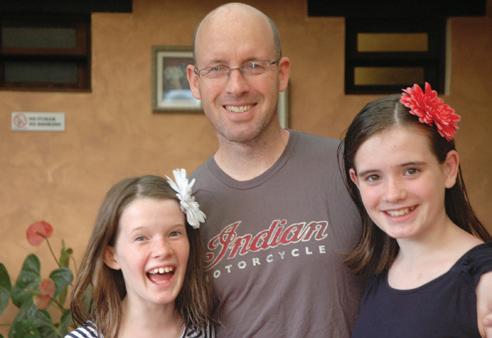
DM: Ch-Ch-Ch-Changes for the whole Collins family.
DC: It's an exciting time. I like storytelling an awful lot, I really love it. And I like getting people excited about things like this college. I've often thought that if I could do work in documentary film, that could be really interesting. But I don't know. Suffice to say I'm taking my time, and I've got a lot of work going on through the end of the year. I'll be here through June 30. And whatever I do, COA will stay in the mix. That'll for sure happen.
DM: We will miss you, Darron.
DM: Likewise. I'm also really looking forward to the next person coming in. And like I said, the president of COA is part of a team, they need to be a team player. I'm eager to see how they build on all the things that this college has accomplished over the past 53 years. It is an exciting time for the college.

VENTURING FROM the bustling streets of Brooklyn, New York, to the serene landscapes of Maine, I found my academic haven at the College of the Atlantic. The allure of this unique institution lies in its philosophy of allowing students

to freely explore diverse interests. I was enticed by the prospect of studying human ecology while seamlessly melding disciplines like performing arts, sound design, and coding. The transition from New York’s murky waters to Maine’s
Our Band Could Be Your Life: Music, Art, Zines 1975-2015, led by [COA Magazine editor] Dan Mahoney, was a captivating journey into the intricate connections between music, art, counterculture, and resistance. Investigating the sub-pop music culture, the course provided a deep understanding of its profound links to various counter-cultural movements and forms of opposition. Throughout the term, the class delved into readings by critics who comprehended the profound intertwinement of music cultures with identity and politics. Engaging with these texts expanded students’ perspectives on the multifaceted nature of music as a vehicle for social commentary and expression. A unique aspect of the course was the weekly assignment of listening to albums representing different genres. This immersive experience allowed students to examine diverse musical landscapes, fostering a comprehension of the evolution and nuances within various music styles. However, the exploration wasn’t limited to passive listening. Assignments such as making zines, music videos, manifestos, and other creative projects provided a hands-on approach to appreciating analog artifacts. This practice was particularly significant in an increasingly digital world, enhancing students’ appreciation for tangible, physical forms of expression. The culmination of the course was an extraordinary event held at Thomas S. Gates Community Center where the class showcased their talents.

crystal-clear ocean was a sensory awakening. COA’s promise of academic liberty resonated deeply with my passion for immersive, hands-on experiences, steering me towards enrolling primarily in studio art and music production classes.


In the Intermediate Ceramics course, led by ceramic artist Rocky Mann, my focus sharpened on refining my throwing techniques, particularly in crafting bowls, while delving into the domain of glazing methods. However, what truly captivated my interest was the exploration of slips—a blend of watered-down clay infused with pigments, offering a versatile medium for drawing and painting on the resilient green clay surface. Working with slips was a revelation. Mixing various slips together to achieve specific colors seemed straightforward at first. Yet, the intriguing aspect was witnessing these colors transform during the drying process. What initially appeared as a rich dark green might evolve into a different shade, while reds took on unforeseen hues like pink. This unpredictability in color evolution during drying fascinated me. I found myself inadvertently stumbling upon new color combinations, a creative journey I hadn’t preconceived. This element of surprise mirrors what draws me to artistic mediums such as pottery and printmaking, where the final outcome often evolves beyond the artist’s initial intentions. It’s a poignant reminder that while I can influence my art, the materials themselves contribute their unique narrative. The communal aspect of studio ceramics also left a lasting impression. Observing fellow potters’ shelves gradually fill up with their ongoing projects was immensely inspiring. Witnessing emerging trends and evolving styles within COA’s pottery community was fascinating—a testament to the diverse artistic expressions within the studio space.

DEPT/ID COURSE NAME
AD 3032 Intermediate Ceramics




AD 2035 Our Band Could Be Your Life: Music, Art, Zines 1975-2015
AD 4019 Studio Printmaking

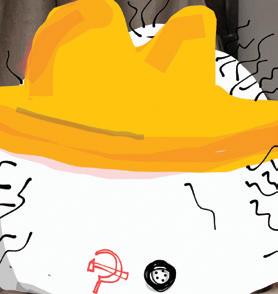




DREAMING OF BETTER DAYS in the Arts and Sciences shower.





Studio Printmaking, led by COA Allan Stone Chair in Visual Arts Catherine Clinger, was a transformative journey through the diverse realm of printing styles. From the intricacies of intaglio to the expressive relief techniques, the course exposed us to the rich tapestry of printmaking. What struck me most profoundly was the inherent urgency encapsulated within prints. Bold, arresting letters and powerful imagery served as vehicles for poignant political messages, mirroring the historical significance of prints as a potent blend of utility and artistry.

INSTRUCTOR
Tues/Fri
Mahoney, Dan
Mann, Rocky Tues/Fri
Catherine

Our studio sessions were a sanctuary of creativity, offering ample time to delve into the complexities of each print design. The process demanded patience, unveiling layers of understanding and skill development. Despite my background in drawing, relief printing emerged as a challenge, forcing a re-evaluation of my grasp on light and shadow. In drawing, shadows are added to create depth, yet in relief printing, the technique involves subtracting darkness to reveal light—a paradigm shift that ignited a new dimension in my artistic comprehension. The contrast between relief and intaglio became evident as we navigated the course. While relief printing disrupted my conventional interpretation of shadows, intaglio resonated closely with drawing. The act of etching into materials like copper mirrored the process of drawing by carving out spaces for ink to inhabit, allowing for an intriguing blend of artistic familiarity within the printmaking world. The sublime nature of printmaking emerged through this contrast. It unveiled the beauty in the nuanced differences between subtracting and adding elements, and the delicate dance between engraving and revealing. Each stroke, each cut, held the potential to transform a blank canvas into a compelling narrative—a testament to the sublime fusion of technique, patience, and artistic expression. Catherine Clinger’s guidance and expertise served as a beacon, illuminating the path toward a deeper appreciation of the multifaceted world of printmaking—a discipline that continues to bridge the gap between utilitarian messages and artistic endeavors, resonating through the annals of art history and sociopolitical discourse.

By Kiera O’Brien '18
IN HIS FIRST SUMMER season on Mount Desert Island, Michael Boland '94 wasn’t sure he would be sticking around for long. “I was bartending in town, and someone came in boasting about how it was their sixth season in Bar Harbor,” Boland recalls, laughing. “I remember thinking to myself, Good for you, this is my first and my only. I’m moving on! ”
Thirty-odd summer seasons later, Boland is a committed MDI community member, not to mention one of Maine’s most preeminent restaurateurs. The success of Boland’s restaurants—from the award-winning Latin fusion of Havana to the cozy year-round fare of Choco-Latte Cafe— are a testament to just how much he changed his mind after that first summer. “I was only 19 or 20 at the time, but I do remember at some point realizing, This is where I am going to spend the rest of my life.”
Boland’s transformation from singleseason transplant to dedicated local entrepreneur was aided by his discovery of College of the Atlantic: “I didn’t originally move to Maine to go to COA, but in many ways, it was the perfect fit for me.” The college’s interdisciplinary, self-directed format was especially appealing. “One of the things I loved
most about COA was that I was able to meld my love of travel with my studies in marine biology, environmental sciences, and ecology.”
For his senior project, Boland studied the prevalence of Inia geoffrensis, or pink river dolphins, along the Rupununi River in Brazil and Guyana. It was an important turning point. As he puts it, “I enjoyed the project but I also learned that wildlife biology involves a lot of statistics—whether the dolphins are there or not.” Realizing that the hours of office work that accompany field work weren’t for him, Boland put his time on the river to good use. Shortly after graduating, he opened his first restaurant, The Rupununi, in downtown Bar Harbor.
“I was working in restaurants on the island every summer, trying to make enough money to travel in the winters,” says Boland. “I realized: I’m good at restaurants. They’re complex, and they require a very interdisciplinary approach.”
Restaurants also offered a way for him to have a positive impact on the local community he had decided to call home. “Rupununi was one of the first restaurants to state on our menu that we weren’t using Gulf of Mexico
shrimp. From the beginning, we sourced our shrimp from local Gulf of Maine fishermen,” shares Boland. Havana, which he opened with his wife, Deirdre Swords, in 1999, was another early leader in championing locallysourced, organic ingredients across its menu. “We have the ability to have an impact on food systems, on where we're buying our food, on what we're eating, and what my guests are eating.”
Since 2017, Boland has served on College of the Atlantic’s Board of Trustees, a responsibility he feels lucky to hold. He especially enjoys chairing the board committee for Buildings & Grounds, as he’s “always had a passion for the campus buildings and the historic architecture of the campus.”
Reminiscing about his favorite spots on campus as a student, Boland uncovers a piece of COA history for me: “It had to be the yurt! It’s not there anymore, but it was built in the '80s, in a copse of trees near the Shrine (also no longer there). It had a woodburning stove. Students could apply to live in it.” After a pause, he chuckles: “I can’t believe they let students live there!” We both laugh at this. The yurt may not be there anymore, but the spirit of it certainly is.
By Anara Katz

There has long been tension along Maine's coastline in the struggle for economically and environmentally sustainable engagement with the ocean. Scientists aiming to conserve species in Maine's bays and lobstermen working to ensure a livelihood for future generations have often been put at odds with one another, but Navigating Change: History, Place, Stories, a three-credit "monster course" taught at College of the Atlantic in fall 2023, argued that the two positions are actually strongest together.
Continuing a series of collaborative projects over the past decade largely under the umbrella of the Fund for Maine Islands, Navigating Change brought students into fishing communities along the shores and islands of Frenchman Bay to collect stories from those voices typically underrepresented in marine policy-making, gather and plot scientific data, and sail the local tides and winds. Their occupation during the term was to center those important voices, provide back to those communities essential historical records and insight, and connect the work of science and story-telling in order to support Maine's owner-operated fisheries and a strong, diverse marine ecology.
Team-taught by computer science professor Laurie Baker, history professor Todd Little-Siebold, marine scientist Hillary
Smith, waterfront director Toby Stephenson '98, and coastal community engagement program lead and researcher Galen Koch, the course explored how history, geography, audio storytelling, and data science can illuminate, document, and nurture community perspectives on the past, present, and future. By using skills from data analysis and visualization, oral history, audio storytelling, and community-based research rooted in both history and geography, students in the class aimed to cultivate community conversations about how people have used different strategies to adapt to dramatic changes in the past and present in ways that could inform their future.
"There's a lot of myths going around about fishing and a lot of prejudice… fishing is not just a way to make money, but it's also a way to build a community and to have a livelihood to be proud of, and that means being a steward of the environment," said Giulia Cardoso MPhil '20, who has been lobstering off the coast of Mount Desert Island since receiving her master’s degree from COA. "To allow the students to learn about people and places they might otherwise have inaccurate ideas about, that's the best contribution to a community that the college could make."
Beyond educating students in the deep history, resilience, and adaptation of people along the coast, the central mission of
Navigating Change was to really be present in the communities facing change due to climate, policy, and the market, and to understand how being present in these communities in the way that few others have done could lead to valuable, meaningful change.
"Our long-term project is to keep showing up for communities, not to just record some oral histories and then leave,” said Little-Siebold. “Our long-term commitments to different communities is one of the core components of the projects. Where should we go? Well, the question is, Where have we gone? "
right now is the right whale, and on a personal level that one's difficult for me. I want to see the species survive… I just want it to be fair to the lobstermen."
Working toward that goal, Baker and Smith collaborated with the students in Navigating Change to further research projects dedicated to bringing nuanced voice and representation of community stakeholders to policymakers.
Smith's research project, “Gendered dimensions of climate change impacts, adaptive capacity, and resilience in Maine’s coastal fisheries” will use recorded interviews from women along Maine's working waterfront to bring their voices directly to policymakers on the Maine Climate Council.
Long known as a culinary delicacy and bright-red representation of Maine’s “The way life should be” motto, Maine lobster made the news for a more negative association in 2022 when the Monterey Bay Aquarium put Maine lobster on its "red list" for the endangerment of the North Atlantic right whale. Lobster lovers were given a stark choice by the aquarium’s listing: give up the food you love, or help protect a majestic, endangered creature. However, this choice was motivated by a false dichotomy: At the time of the listing, there had not been a single right whale death or entanglement tied to Maine lobstering gear for over 20 years (although this may have changed as of 2024, when the Maine fishery seems to have been implicated in a a whale death).
The idea that marine conservation is the purview of scientists and must be handled in opposition to those making their living from the sea is pernicious and harmful. Maine lobstermen have, in fact, changed habits and switched to more species-friendly equipment many times over the years to reduce the negative environmental impact of their work. Some changes were because they were mandated by public policy, and others motivated by internal agreements with a purpose to ensure the sustainability of fishing in Maine for future generations. As Navigating Change highlighted, these fishing communities, having seen both the good and the bad effects of their work over the years, are the last ones who want to jeopardize their way of life. They are working hard to strike a balance.
"Maine lobstermen have done a lot to conserve. The whole idea about punching the tail of the female, the minimum size, the maximum size. We really, I think, have done a lot to keep the lobster available, and growing, actually, increasing. So, you know, I think they can take some pride,” said Gouldsboro resident Jean Symonds in a sound piece from a Navigating Change project by Kristin Zunino '24, Asy Xaytouthor '26, Jessica Bonilla '24, Ludwin Moran Sosa '24, and Michelle Hanselowski '24. “They put exits in their traps so that small lobsters can get out…among other things. So, they've done a lot of that policy. And, I know the biggest issue facing them
"By working with the council's equity subcommittee, we will leverage upcoming policy windows as the state's climate action plan is revised in 2024 with a focus on equity,” Smith outlined. “Understanding the impacts of climate change on women's fisheries activities, their adaptation strategies, and innovations can enhance resilience for all… and ensure a more equitable fishing economy for the future.”
Fishing in Maine is often seen as a man's world, but there are many women working in the marine industry in aquaculture,
It really was a part of history because it’s not something that’s done anymore, unfortunately. So, it’s kind of a lost art.
—MICHELLE PINKHAM
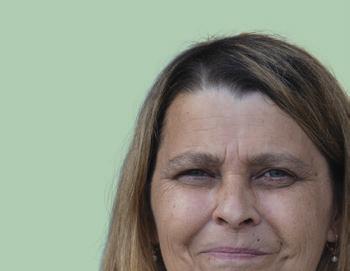


fish processing, lobstering, clamming, and also many women involved in the fishing industry, even if they are not going out on the water. That's why it is crucial for their perspectives to be heard, although gender dynamics often lead to their voices being underrepresented.
One final project in the class, dedicated specifically to Smith's research, saw students interview six women from Gouldsboro harbor. The Goldsboro village of Prospect Harbor was once home to the Stinson sardine factory, the last of its kind in the US. Stinson’s closing in 2010 left a big impact on the people in the community, specifically women, who comprised most of the workers there. The group was able to capture the trajectory of the factory and these women's lives through time and looking forward. In addition to contributing to Smith's
I worry a little for the future because if those [climate related] changes happened in just ten years, I can't imagine what will happen in the future... But change is inevitable, growth is optional.
—JEAN SYMONDS
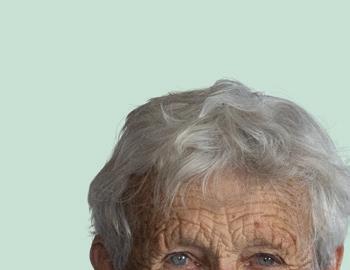

research, their audio pieces will be added to Koch’s ongoing Maine oral history work, published on Maine Sound + Story (MS+S), a digital archive.
"As the years have gone on, I'm more aware how important it is for women to know that they can in fact be involved in any aspect of this industry now," said Jean Symonds, an interviewee and the first woman on the board of the Maine Lobstermen’s Association.
Baker's research will also use students' oral history collections, along with MS+S public archives and other collected data, to create a bird's-eye view of changes along the Downeast coast in response to climate change. Utilizing her background in data visualization, Baker aims
I was again out of my comfort zone. But, sometimes when you believe in something, you just take a deep breath and dive in.

—REBECCA “BECKY” O’KEEFE


























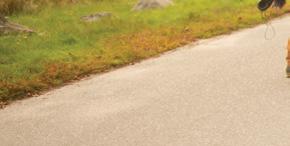









Since its launch in 2015, the Fund for Maine Islands has addressed four areas of critical concern for Gulf of Maine residents, including food systems, energy, education, and climate change adaptation. The fund, a collaborative effort between COA and the Island Institute, was jump started by a $2 million grant from the Partridge Institute, and has since secured funding from a number of other sources. Navigating Change is just the latest in a series of projects and courses to be supported by the fund.




One of the early Fund for Maine Islands projects involved a trip by COA students and faculty, Island Institute staff, and five mid-coast island residents to Samsø Energy Academy in Denmark to learn about energy sustainability. This trip subsequently inspired the founding of A Climate To Thrive, a Mount Desert Island-based and resident-led organization with a goal to help MDI reach energy independence by 2030 through decentralized, local, renewable energy solutions. Little-Siebold’s 2018 class,
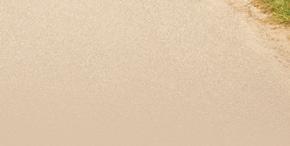


Mapping the Ocean's Stories, which involved oral history collection similar to that done as part of the Navigating Change course, has led to a more permanent project of the same name led by Natalie Springuel '91 of Maine Sea Grant in collaboration with The First Coast, COA, and the Island Institute.


to use complex and layered digital experiences to synthesize important information while still maintaining nuance.
The project is still in its early stages, and so it is yet to be determined how the results will be raised to policymakers, but Baker is confident that it can be leveraged to bring positive change to these coastal communities.
"There's a lot of really rich information and knowledge from people’s lived experiences that often gets overlooked; it's hard to incorporate oral histories into policy decisions because they’re hard to quantify, but new techniques in data science like text analysis can help with that. We hope to create something that's queryable, shareable, and an open resource," Baker said. "By synthesizing and categorizing interviews based on key characteristics like place, industry, and topic, we hope to make it easier for policymakers to hear from stakeholders and learn from their experiences in meaningful ways."
The project also has potential to help people learn from each other and make changes on their own accord, Baker said.
"I also hope that this project helps to make connections
between communities so that people can put their heads together, especially if folks have found a solution that's helping them navigate the changes facing their community. For example, climate change is already here, but to varying degrees and in different ways. A fishery in Massachusetts or Rhode Island may have experienced changes that Jonesport or Lubec may experience in 10-15 years… learning from the past and learning what’s worked in other communities can help people prepare and navigate the changes ahead of them," she added.
These research projects emphasize the importance of sticking together, and lifting up one another's voices. Looking through the lens of human ecology, marine policies—even with intentions to protect endangered species of our oceans— should be considered unacceptable unless they also consider their human impact. Navigating Change reminds us that this is too often left behind. Caring about the ocean means caring about its stakeholders, and caring about its stakeholders, especially in the case of Maine lobstermen, means caring about the ocean as well.
By Dan Mahoney

By using community-based social arts practice in order to visualize connections between coastal people and place, Jenny Rock '93, Elle Gilchrist MPhil '21, and Ela Keegan '21 are working in New Zealand to document coastal heritage and visualize coastal futures under climate change.
DAN MAHONEY: This project is one spoke of a larger project about the resilience of coastal communities living under the threat of climate change.
JENNY ROCK: That's right. We started in one of the southernmost communities in the world, a place called Stewart Island/Rakiura. There are about 400 people living there and they are pretty cut off from the rest of New Zealand. Although some would say they're not so cut off. They have a ferry and a little plane, but it costs a lot to get there. Electricity is all but impossible to afford. So, they have a lot of constraints, which makes for an amazing community. There have been waves of settling, including by Māori, and they're now kind of at the bottom end of the pack because of power issues, but even with these struggles, it's probably going to be a super resilient place in terms of climate change adaptability.
DAN: What is the nature of your project?
ELA KEEGAN: We are engaging communities using social arts practice. The center of our practice with this community was a printmaking workshop. We were making prints with the community, but there were many different phases before and after that too. In prepping ideas for images to make into printing plates, we were trying to understand what people's connection to coast was, and then we used that information to create different printing plates we brought into the workshop. It was like...
ELLE GILCHRIST: [Elle and Ela showing pictures simultaneously] Show and tell.
ELA: Show and tell... Here is the mooring field that is visible from the town.

The image research side of the project took a few months to prepare. We used pictures the schoolkids made, we also researched archives to locate historical images we then turned into plates for printmaking. In the workshop itself, we asked people to create a print artifact that represented their connection to coast. What that then became was a community collaborative artwork that took the structure of a midden.
JENNY: The community was making choices as to what to include.
ELLE: Right. We started working through this idea of a midden because it's just such a cool metaphor. We're having people make these artifacts that represent their personal or their collective relationship to coast, but we're situating them visually within a midden structure. And there's something cool about that because a lot of this is thinking through heritage and what it means to basically exist in a place. How a community layers through time, and how each one of our own experiences of coast and of heritage is so multifaceted.
JENNY: And that's where the sea level stuff comes in because erosion and sea level rise is some of what will affect the continuance of the physical symbolism in terms of the heritage. Reckoning with that caused us to consider more questions: What kind of choices need to be made? What kind of actions are entailed in maintaining these things into the future?
DAN: Was it a challenge to integrate all those different people with different agendas into a coherent midden structure?
ELLE: No. It's such a different mindset than the US.
JENNY: It's probably even a different mindset than the North Island (of New Zealand). This is a much longer conversation, but for the sake of time, for various reasons, there was a lot of integration on Rakiura over the last few hundred years. In the South of New Zealand this was pretty intentional by Māori—to be inclusive. And there are a lot of reasons behind that. But it persists and it has made a very different place than say the North Island in terms of integration, and on Rakiura a very different resilience story.
ELLE: Right. And if you keep thinking about the midden, it's like that's the context upon which everything is standing on. That is the foundation. The history of all those years of that style of integration is the thing that frames the choices being made daily.
DAN: Interesting that these folks embrace the polyphony, many voices instead of just one or two.
JENNY: It's a bit political but, if asked, people are much more likely to name the diversity of their heritage rather than just pick one aspect of their heritage and run with that.
ELA: There were several people at the workshop who had come to the island—or weren't even from New Zealand originally—and were so aware of that heritage and held that
kind of respect and care and importance of the heritage even though it wasn't necessarily their own... but it was theirs too because they were now living in this place. You could not be outside of it because as soon as you were living there you were absorbed by this heritage and that also informs this resilience.
ELLE: Yes, absolutely.
JENNY: There are lots of resources in Rakiura that have been capitalized on, and they've been capitalized on by different cultures, but the artifacts of those cultures are still cherished in a way... So, the heritage is cherished, and the naming of the places is reflective of all that. It's so...
ELA: Concentrated.
JENNY: Yes. And alive.
ELLE: It seems like the way that they draw their boundary of a group is like the island itself. It's not necessarily your genetic heritage, but more if you're living on Rakiura, you're part of that community. That's how I perceive it.

DAN: Rakiura sounds a lot like some corners of Maine I know where you only gain Mainer status after three generations.
JENNY: You do need to do a little time on Rakiura to get some cred, but it is more inclusive. Its extra-remote islandness demands it.
ELLE: In our work we found these qualities of place that shaped a lot of the socio-cultural dynamics were things like abundance and biodiversity...
ELA: And proximity.
ELLE: Proximity, right, and then isolation. Isolation from the mainland and the intense body of water that makes for difficult crossings. This helps create an intense local proximity, a closeness of the community which then contributes to
a lot of self-reliance and adaptive qualities—like being opportunistic and intentional with resources. That sort of thinking blossoms out there.
JENNY: We worked a lot with the school trying to absorb as much as we could about what the young people valued, alongside the wider community’s heritage values, their senseof-place values, and what they thought needed protection to carry on... but there was also fear, like folks saying we're good for now, but we don't know how much longer we can carry on (i.e., How long can we maintain this level of necessary community activity and leadership?).
ELLE: We went back and forth from the school to the community, sponging up what the printing plates needed to have in them to capture the complexity and nuances of what it means to be in this place.
JENNY: We used printmaking as a social arts practice. Printmaking is nonconfrontational, anyone can do it, and when you are printing you create multiple images with multiple combinations and from all that a story emerges. We were very intentional in our workshops to allow for participants to play while thinking hard about their perspective and how to encapsulate that visually. All in all, we offered up 80 printing plates. Imagine that, and the complexity when you start having multiple plates printed together.


DAN: Who made all these plates?


JENNY: Raise your hand if you made plates. [They all raise their hands.] I use printmaking for a lot of community projects as a different form of community consultation. You can think about things while your hands are busy. It gives you time to reflect before you speak and to do so in a social mix where you are exposed to other’s perceptions, too. It also attracts different people than those who might usually come and be vocal at a town meeting. It's as easy as making choices, and family groups can even work on a piece together.
ELLE: It’s fun too—all the different color choices.
JENNY: We bring this big press down—it kind of looks like the wheel on a ship—which makes it appealing for all ages and walks of life.
DAN: I love old presses... You're looking at technology that was built in the 19th century that is still functioning today. So cool. So now you have all this stuff created by the community, but so what? What now?
ELA: I'm here doing my master's thesis and Jenny is my advisor. I'm deep diving into these artifacts the community created, analyzing the images people decided to put together, how they were used, and what values they stand for. I'm also analyzing the story captures, looking at the narratives about why people made the prints they did, the narratives about their relationship to coast, what practices they want to continue in the future, and looking to understand the threads of resilience that exist in the community.
ELLE: Once we had the midden created, we brought the community together and had them respond to what they were seeing. We prompted some questions about navigating change in the future and what actions they needed to take to move forward. This facilitated the creation of this gigantic mind map which pointed to how the community defined resilience and the qualities of resilience they valued. The questions then became: What is it that people want to carry into the future? How do they hold onto the current qualities they value while making space for change?
ELA: What the community told us was this: They wanted to have a continuation of wisdom, knowledge, and history flowing through multiple generations. They wanted to continue the community culture that maintains safety and freedom, remarkably resilient youth, and a volunteering ethic. This was incredibly important to them: there is a strong history of volunteerism that shapes the tightness of the community that is being threatened by time, energy, the affordability of things, and growth.
JENNY: Gross growth.
ELLE: Gross growth. Right [laughter]. They also wanted the mindset of valuing their place and their resources and not taking things for granted. It's a very intangible heritage. Strategic community involvement and decision-making are directly related to preserving and protecting the environment as a provider. But they also struggle with external government issues, figuring out better ways to navigate external bodies of governance, the top-down structures that operate at a distance. All of this is related to strategic decision-making about material things like wharfs, schools, electricity, and the affordability of things.
DAN: That's a lot.
ELA: It is a lot. For me, writing my thesis, using all the notes and mind maps and complexity we've encountered… it's important for our work to represent the community’s experience and what the community actually wants.











DAN: The midden is a great structure to represent the complexity of a place. Was that always the plan, or how did that come into being?
JENNY: It shaped everything. The midden is in layers, so there is a temporal element, but it's also collectively a big mess of… well… stuff. But it's intentional stuff. A midden shows people’s actions and choices, it shows your habits and values. And with something as dramatic as climate change, we all start thinking of what we will lose from the past, but on Rakiura that temporal line, that heritage, is still held close; the past is still very much alive. The structure is a midden of the past but it's also a midden of the present and of the future. Articulating that for other communities to learn from is important, because community-to-community conversation is what, in the end, we are facilitating, and is a big challenge. One of the things that made this community so resilient was that active line which really acts like a circle. It's an embodied heritage that is really strong in spite of a lot of challenges, but maybe really strong because of those challenges.
DAN: So, Ela is doing her master's work there and Elle you have a master's already right?
ELLE: Yeah, I finished my master's at COA a year ago. I was looking at some of the socio-ecological dynamics of things that were happening in a fishing community in Yucatán. I was looking at the relationship with the ocean and how that webs out into everything else, in particular things like the growth of tourism and the decline of the grouper fishery. I took a multimethods approach. I was living in the community, doing a bunch of interviews, and some social art. We did really cool collages, which was a similar flavor of project to this one but with different media.
DAN: I keep hearing this term: social art practice. What is that and why is it important for this sort of work?
ELLE: Art is just really interesting... It's this thing we ooze sometimes. It's an expression of something that's in here [gestures to her body] and it does not need to be verbal although it could be verbal. We've been working in mediums
that are very accessible—collage and printmaking are accessible and satisfying to work with, addictive even— which make them ideal for expressing ideas in a very physical way. You have to use your hands and your body to select things and think through ideas as you're creating, and it slows you down, which is nice. You can make thoughtful choices that we can then glean a lot of understanding from. It is also a less extractive method of coming to understand people and their stuff (perceptions, ideas, feelings) and the way they relate to their stuff.
ELA: It allows working with a community to be much more personal. When I was at COA, I did a lot of projects in the Mapping the Ocean’s Stories course (page 39) and getting to interview people. Then we took the audio and made either narrative or sound pieces. There was great creativity in that practice. There is something so powerful about letting people tell their own stories. It feels less intrusive as a researcher coming into a community and just trying to understand and learn instead of trying to take something. The social art practice just creates a channel for that dialogue to happen.
ELLE: And depending on how you work, different ideas emerge that might be hidden if you were just doing a verbal survey.
ELA: People were taking the artwork with them; when I would show up to do an interview for my thesis the art would already be on the fridge. It was already part of their home.
DAN: I'm thinking of graffiti here, as in a record of a person being in a place or a map of being in several places.
JENNY: It all comes down to maps in the end, whether it's physical maps or mind maps or using a midden as a map of human activity. Another one of the mapping layers of this project was going to be using technology to geolocate values, but that is for a future stage. We are sitting on a huge amount of generated data that we are now sorting into some bigger messages of meaning about tangible and intangible
values, values oftentimes missed by models that only address specific aspects of economic infrastructure or specific threats to X from Y or Z. So, for our work, if there is a way to at least map the data we've been gathering it's taking a first step in reaching the power brokers who need to widen their view because they tend to look at physical infrastructure being the only value that matters.
DAN: Do you see your primary function as reaching those power brokers and showing them what you are seeing in terms of how "value" works in these communities?
ELLE: It is important to be able to translate data to people who hold legislative power, but at the same time, there is a lot of power in community members being able to see for themselves, visually or even foundationally, in order to understand where these places of heritage are. If you have that knowledge of yourself and your community then there is a certain empowerment which leads to more agency in being able to make strategic decisions, and that can then guide your actions when you are working with legislation or with top-down power structures. So, yes, translation is important but it’s not the only valuable piece here.
JENNY: I remember what I wanted to talk about from earlier: wharfs.
DAN: That's a great word to remember.

JENNY: Wharfs are important. The wharf was such a huge metaphor down there for so many of the inherent issues, the power struggles, the growth stresses, the lived heritage, and the huge connection with place and the resilience of the community. Just a tiny example of what was unique to that place. When we began our work, we were thinking about islands and common features of islands, but in doing the work we kept coming back to the wharf. One of the things that the community expressed really strongly was that their children are very mature, and they are mature because they have huge freedom, and they have huge freedom because they have a community looking after them.
DAN: That strong community feature again.
JENNY: And it is so boat based. So, one of the freedoms is at something like age seven they go through the rite of passage where they can go out and row the dinghy, and then by eight or nine they can row the dinghy with a mate and no adult... And then they can go out to Big Rock and fish on their own. But all the rites of passage happen because there are people out there—not necessarily family members—keeping an eye on them. But that watchful eye needs to be there for the freedom to be there, so the community suffers when folks are overstressed with work or other commitments trying to make ends meet. And maybe someone from there or away comes up with an idea for the community to gain income by constructing an enormous new pier that can handle big cruise ships... But that enormous pier is not something a youngster can pop their little dinghy off of. You can see where this is going, right? One thing leads to another, and another, and another, but because they've articulated the value of the freedom and maturity of their children, those things become overtly in conflict. You know, Rakiura children do come back too, not always, but many times, and because of that the heritage and those memories are carried into the future. You mess with one structure like the wharf, and you've jeopardized all of that.
DAN: It seems so obvious but sometimes what is obvious is easiest to forget.
JENNY: The social art practice is really just a method of making space for people to think and realize and have social conversations around artmaking and images... It's empowerment through active realization, memory, and recognizing what's important, because it would be easy to lose sight of something so common and think, Okay, let's have a really big pier and only afterwards realize what you've lost. This practice helps center those things.
ELLE: Art helps bring out that sort of understanding...
ELA: Exactly. It's a process of understanding.

By COA President Darron Collins '92
AND BILL NEWLIN are ventricles in the beating heart of College of the Atlantic, absolutely core to who we are and what we do. For four decades they have supported the idea, the work, and the people of COA through their philanthropy, their teaching, their writing and research, and their leadership on the COA Board of Trustees. To document their full impact on the college would require the length of the entire magazine, but I simply cannot leave the COA presidency without putting some words about them in indelible print.
Speaking of indelible prints, I’ll never forget the time Bill and I wandered the lower reaches of Old Mill Brook on the COA Cox Protectorate in search of brook trout when Bill lost his balance and fell backward into the thick, odorous mud. Darron, I’m going to need some help here, he said calmly. We were just barely able to unearth him. He left a perfect outline of his body in the mud, which seemed very appropriate given his love and commitment to the freshwater environs of Mount Desert Island. Bill imagined and orchestrated two editions of The College of the Atlantic Guide to the
Lakes and Ponds of Mt. Desert:
Discovering the Freshwater Gems of Maine's Largest Island, the second of which was done alongside COA David Rockefeller Family Chair in Ecosystem Management and Protection Ken Cline and a group of COA students, and became the first volume ever published by The College of the Atlantic Press. Louisa—helping round out the family’s diverse, human-ecological interests—taught Shakespeare at COA, and left her own distinct impressions on students here through that work.
As central as the two are, it’s hard to not consider their family tree when describing the Newlin-COA relationship. Louisa’s father, Bill Foulke Sr., was a COA board member. Bill’s son Bill Jr. chaired the board and spoke these words to me: We would like to offer you the position as president of College of the Atlantic. Bill Newlin’s sister, the remarkable Lucy Bell Sellers, is the godmother of theater here at COA. Lucy Bell’s late husband, Peter, was a mathematician, scholar at Rockefeller University, and former COA board member. Lucy Bell and Peter’s daughter, Frances Stead-Sellers, is a Washington Post
editor and has been a key part of the COA Summer Institute. The tendrils of the Newlin family tree run deep and wide here. (Tendrils, a botanical reference, make sense when you consider the Elizabeth Battles Newlin Chair in Botany, named after Bill Newlin’s mother.)
Although it feels next to impossible to supplant a colloquial name with a formal one here at COA, I’m on a mission to do so with the Newlin Gardens, which just about everyone refers to as the Red Bricks. That entire courtyard area west of Thorndike Library—arguably the center of gravity for the entire college—is, indeed, the Newlin Gardens, named in honor of Bill’s father, and should be voiced as such! If you can sneak past the watchful eye of our head gardener, Barbara Meyers '89, look around amongst the low-lying vegetation and you will see a plaque there with the garden’s official name, a present but not flashy marker, perfectly aligned with the Newlin way of being. Next time you see Bill or Louisa or anyone of the wider Newlin-Foulke-Sellers clan, tell them Thank you, and that the omens here at COA are very, very good.

WHENI WAS in middle school, a small text in my history book grabbed my attention. It was about what it means to be Homo universalis. I remember it said something about how in order to be a well-rounded individual, one needed to understand math, physics, astronomy, art, music, and linguistics—i.e., be an interdisciplinary learner. This was what I believed education should always be. After I came across COA, I tried to understand what human ecology was by scouting every single

page on the website until an epiphany came to me; my eyes shone bright as I discovered that COA shared the same idea I did about interdisciplinary learning. COA’s educational model matched my beliefs more completely than the Homo universalis text ever did. Freedom to create your own degree and choose all your classes; freedom to design your own path that matches you as an individual; freedom to have interdisciplinary passions and encouragement to incorporate them into your overall education. A strong


There are so many biomedical research opportunities on the island for students to gain practical, hands-on experience. We are lucky to live close to the MDI Biological Laboratory and The Jackson Laboratory. One of the opportunities afforded to COA students is the annual five-day genetic workshop at the MDI Biological Laboratory. Every year the workshop subject changes, but when I participated we focused on correlating genotypes and phenotypes in C.elegans and mapping their F2 cross progeny with fluorescence-tagged genes using CRISPR. We also used a variety of microscopes, such as widefield deconvolution and spinning disk microscopes, to visualize oocytes and sperms of C.elegans. We even gained some experience using Fiji, an open source platform for biological image analysis. I worked as an academic year fellow at The Jackson Laboratory researching the role of MTHFR 677 C>T variant in the maintenance of blood-brain and blood-retinal barrier in a mouse model under Dr. Alaina Reagan at Howell lab. This year, I am working at COA’s chemistry lab under professor Reuben Hudson on exploring laboratory-scale separated hydrothermal vents to probe possible scenarios for a “metabolism-first” emergence of life.
focus on and attention to advising and mentoring from your professors and peers. COA pushes you to advocate and create opportunities for your education, passions, and personal interests. Advocating for yourself and your education is the best pedagogy an educational institution or program can offer students. My education is more contemporary and closer to real-life conditions by being hands on and allowing me to discover what I am passionate about.
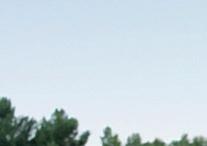










DEPT/ID COURSE NAME
ES 3032 Genetics
ES 3096 Introduction to Proofs and Mathematical Structures
ES 3097 ES 3065 Intro. to Epidemiological Modeling Molecular Genetics Workshop




Genetics was the theoretical backbone I needed to better understand my research at the Jackson Laboratory on the MTHFR 677 C>T variant in Alzheimer’s disease and its linkage with the deterioration of the bloodbrain barrier. My final project on the topic allowed me to look deeper at the scientific literature around this research area. My final assignment—which was similar to a literature review—helped me to create my research poster for the 2023 JAX Academic Year Fellow poster session. I learned so much about genetics. For every problem set I had at least two pages of citations because every question was so interesting that it inspired me to seek more answers, read many academic papers, and ask more questions. I love classes that inspire me to ask questions and search for answers.

MY FRIEND Kandi Grey '25 took this photo on a lovely evening during COA Farm Day. I am with my friend Lucy Dabbs '25, right, at COA Peggy Rockefeller Farm, enjoying conversation with other students and listening to live jazz music.


Proofs and Structures was one of my favorite classes at COA. It was a tutorial with seven students and Dave Feldman, our professor. The class went through the book Proofs: A Long-Form Mathematics Textbook by Jay Cummings, an enjoyable, inexpensive, and interesting book with many jokes. I highly recommend it if you are into maths! We worked through the term in groups, collaboratively solving problems from the book and trying to type them in LaTex, a programming language to write beautiful equations. Then we discussed our different solutions and wrote up methods as a group. It was super fun and we ended up helping each other a lot. Many times I was fascinated with the elegance with which my peers solved questions and the diversity of different solutions. Even if the two groups used the same proof method, the write up was different, which showcased the individual’s thought process. I loved it.


Epidemiology combined differential equations—a field of maths I have been excited to learn for a while—and R programming, a programming language that you can use to do statistical analysis and data science. In the previous two terms, I took Introduction to Statistics and Biostatistics, and was excited to use R language for something other than statistics. Learning differential equations through real-life cases and their applications was fascinating. In the class, we explored different compartmental models used in epidemiological modeling; think of it as modeling that consists of demographic information, immunity, and vaccination equations that allow you to predict how diseases and viruses will develop in a given population, given different parameters. My final project was trying to replicate the results of a compartmental epidemiological model for HIV and AIDS predictions in the global population, given a dataset I found online.
Excerpted with permission from “From the Ashes: The College of the Atlantic Fire(s) of 1983” (Chebacco: The Journal of the Mount Desert Island Historical Society, 2024), by COA President Darron Collins '92. The full story is available in Chebacco: MDI Inspired.

For the first decade+ after the founding of College of the Atlantic in 1969, the institution celebrated a time of collaboration, creativity, and sacrifice for a cause—the creation of an entirely new, experimental approach to higher education. But between 1982 and 1985, there unfolded a series of events that challenged the very existence of the college, perhaps none more so than the fire of 1983, which destroyed old Kaelber Hall, known as "the main buiding," which housed the school's library, dining hall, natural history museum, faculty offices, and teaching spaces.
College of the Atlantic buildings and grounds head Millard Dority awoke to a phone call at 4:45 a.m. on the day of the fire. “Millard—this is Paul Dubois, you should know there’s a fire on campus, but it seems under control.”
Dority could smell the smoke as he left his home and, as he arrived on campus it was clear that the fire was anything but under control. “I could see and smell the black smoke rising in the east. After an irate exchange with the police at the bottom of Prospect Ave., I was let through. The old building was completely involved. There were offices on the third floor with skylights—flames shot 30–40 feet in the air from those openings. The roar was unlike anything I’d ever heard. Marie Stivers (then Marie DeMuro, the secretary for internships, records, and career services) was sobbing. Her mascara
stained her cheeks and chin.”
July 25, 1983 was the worst day in Dority’s career.1 “When Ed Kaelber hired me in 1970, he gave me a chance, and I’d never been given a chance before then. I have no idea where that day went, but once there was nothing left at the site but smoldering embers, I made my way home and said to my wife, Kathy. I can’t do this. The chances Ed gave me just ran out.”
But when Dority woke the following day and met with COA President Judith Swazey, he was a different man. Swazey gave him a direct order, without council or committee approval in any form: “We have six weeks before the start of the academic year. Get us ready for that day.”
Dority became a man possessed and it was that sense of determination that provided lift under the college’s wings—that and the generous response from the MDI community. Dority had access to that support even though most locals still hadn’t quite figured out what the college was or what it did.
The first evidence of such support came from Dick Higgins, who managed the debris pit near the Hillside Cemetery. “Dick didn’t skip a beat: Millard, haul the debris there and, don’t worry, you won’t get a bill from me.”
Next came books. The old Kaelber Hall was many things to many people COA, but its most important function was as a library in a time before digital archives and when a college’s worth was measured by the number of volumes in the library. By that standard, COA wasn’t worth much. “I’d been tasked to collect volumes for the library,” noted founding COA faculty member Bill Carpenter. “I had only worked through the As, Bs, and Cs. We were fortunate that our collection emphasized Aristotle over Plato.”
Regardless of the number of volumes, the space was sacred. In an important sign of trust, the library was never locked, and students, faculty, and staff worked in that library 24 hours a day, seven days a week. But that sacred space and the entire early-in-the-alphabet collection was either destroyed or completely soaked, as was everything in the personal collections of the faculty who had offices in the building.
Nothing unites librarians more than a library fire. The most urgent piece of help came from the Northeast Document Conservation Center, which instructed COA Librarian Marcia Dworak to freeze whatever water-soaked books remained, otherwise they would mold. “All of our wet books went into the freezers at Allen’s Blueberries out in Ellsworth,” Dworak recalled. “We weren’t charged a dime.”
With the debris gone and whatever remained of the Aristotleheavy collection frozen and protected from mold, the support from local and distant libraries poured in. The Maine Library Commission sent a van and two librarians to campus who dug in to help. Colby College donated more than 3,000 volumes. Sherman’s Bookstore, the Jesup, and the other island libraries came together to help get the Thorndike Library back on its feet with donations and free labor.
The University of Maine sent an enormous amount of material to COA and opened their library to any COA student, staff, or faculty, an agreement that stands to this day. The university also helped facilitate COA’s participation in the Online Catalog Library Center, which helped launch the college into the computer age with an online cataloging system.
Students Anna Hurwitz '84 and Pam Wellner '84 were interning with the Library of Congress. When their supervisor

connected the dots between the two interns and the COA library fire, he instructed them to, “Go into the bowels of the Library of Congress and cull from the massive piles of duplicates in the national collection.”
By November 14 of that year, Dworak reported that COA had received and cataloged 9,145 books as gifts, had restored and rebound 200 fire-damaged books, had thawed and processed 885 books, and still had 483 volumes in the freezers at Allen’s Blueberries.
Founding Trustee Les Brewer then approached the town about the municipal garage on the corner of Eden Street and Mount Desert Street. 2 The town agreed to give that space to the college as its temporary library and it served that function for nearly six years until the new Thorndike Library opened its doors in January 1989. Anna Durand '86 noted that, “The temporary library smelled like fire, and we were frustrated that it had official hours and would not be available after those hours. That said, we made the place our home.” Trustee Betty Thorndike3 continued the process of thawing books—the temporary library would also always be associated with the hum of electric hair dryers.
Dority and his crew of Les Clark, Jim Perkins, Johnny Mitchel, and a team of summer work-study students toiled every day of those six weeks between the fire and the 1983 convocation. With the rubble cleared and a temporary library established, Dority brought in two white trailers that became the primary classrooms for the foreseeable future. The 1983 convocation took place in the low-slung meeting hall that had connected the old building to the carriage house and that had narrowly escaped the fire. The day before the 1983 convocation that started the '83–'84 academic year Dority and his crew slathered the walls with a fresh coat of Kilz primer and the smell of oil hung heavy in the air during the ceremony. ....
As traumatic as it must have been to see the building destroyed by fl ame, there was little sense among the college community that the fi re spelled the end of the college. Where trustees, administrators, and accreditors certainly questioned the viability of the college, 20 COA staff, faculty, and alumnx who were asked, Did you fear for the college’s survival and consider fi nding another institution? in preparation for this article felt differently. All 20 answered No to the question and most of those responses were more emphatic: Not at all. Carpenter summed it up nicely: “COA was not about buildings; it was about ideas, which are much more resistant to fl ame.”
1 Millard Dority was the third employee at COA. He was hired in September 1970 at age 17 and dedicated the next 52 years of his life to the institution.
2 Today, this building is Kids’ Corner, a community-based childcare center.
3 Just several weeks before the fire, on July 9, the Thorndike Library had been named in honor of husband and wife Robert Amory (1900-1972) and Elizabeth (1908-1992) Thorndike in recognition of their support and contributions to the college.

By Kiera O’Brien '18
“I WAS SO HUNGRY for beauty,” recalls Michael Diaz-Griffith '09 of his choice to attend College of the Atlantic at the age of 18. “I came from a background that was very, very distant from the world of COA and the model of the liberal arts college,” explains Diaz-Griffith, who grew up in Florence, Alabama and hadn’t crossed the Mason-Dixon line until embarking for his fi rst semester. “I found COA thanks to Martha Stewart Living. My dad, who didn’t go to college himself but knew I was looking for a liberal arts college in New England, called me in from the living room one day and said, Look, Martha is at a very pretty place in Maine! ”
Certainly Diaz-Griffith was drawn to the idyllic beauty of the small sea-side campus. “Yes, it was about the architecture, The Turrets, the Beatrix Farrand gardens—I basically demanded to live in Seafox!” he jokes. But, he also recognized a holistic kind of beauty that was woven throughout the curriculum as much as it was reflected in the grounds. “I was looking for a college experience that matched and advanced and helped me evolve my values. I found COA and I just knew: This is it.”
He delighted in the permission COA gave him to intermingle his interests, unexpected as certain combinations seemed. “I loved that I could be studying Marx or Guattari in a Bruce
Price gilded-age cottage a stone’s throw away from the sea and the Beatrix Farrand gardens. Those moments planted an important seed for me: I could immerse myself in radical, theoretical texts while simultaneously enjoying this important historical beauty and being a witness to its preservation. Rather than creating false binaries around things that can, in fact, be integrated, I learned that I could find a way for it all to be a part of one life.”
Today, Diaz-Griffith continues to put this philosophy into elegant practice as a curator, collector, art historian, and, most recently, author. Published by Phaidon in 2023, his book The New Antiquarians: At Home With Young Collectors celebrates a new generation of collectors—Diaz-Griffith’s peers— passionately giving new life to historic art and antiques through their distinctive personal collections. As he writes in the introduction to his book, “Collecting is a tradition, but an eccentric one, and it is carried out most capably by free-thinkers who prize self-expression, the pursuit of an individual sensibility, and the discovery—often through old things— of the new.”
Collecting is a kind of human ecology, a resonance Diaz-Griffith is quick to point out. “What I try to emphasize whenever I talk about antiques and material culture is that it’s about
shifting our attention from the parlor to the workshop,” he says. “Shifting our gaze from the fancy associations that many of us bring to antiques and focusing instead on the context of craftsmanship and the making of an object is, for me, a very humanecological act. The objects in our lives are living texts! Hopefully this shift encourages people who might not want to steward our material culture to do so.”
For almost a decade, Diaz-Griffith has advocated for newcomers across the fields of art history, antiques, and design, working to make art and design institutions “a little more vibrant” and a great deal more inclusive. Accustomed, as he readily jokes, to being the youngest person in the room, he has held leadership positions at the Sir John Soane's Museum Foundation and the Winter Show, one of the world’s leading art, antiques, and design fairs. He stepped into his current role as executive director of the Design Leadership Network in 2022. “It’s kind of my dream job. I get to blend my capacity for organizational leadership with my passion for design and support for craft-based disciplines.” How did he find his way here? “Sometimes life is about pursuing exciting projects that each have a different character until maybe, one day, you’re lucky enough to combine it all.”


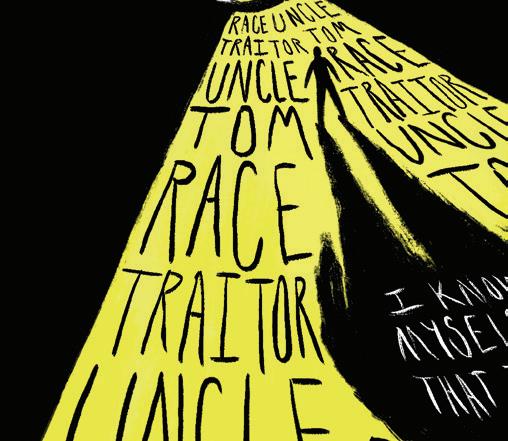




It is January 6, 2021, on the Upper West Terrace-North of the US Capitol, and I am trying to get to a fellow officer who’s been overrun by “peaceful protestors,” all while being physically assaulted by bats and tear gas and verbally assaulted by the word “nigger.” I am a Capitol Police Officer. But if I’m a Capitol Police Officer, can I also be a “nigger?” I’m certainly Black because, according to some of the crowd at the Black Lives Matter protest in the spring of 2020, I was an “Uncle Tom” and a “race traitor.” You can dodge a brick, a rock, or a bottle, but you can’t dodge a word—a label—especially one that takes away your basic humanity… But I’m getting ahead of myself here because, if I'm being honest, for me, January 6 began like any other charged day at the Capitol during the Trump presidency: hectic, but not out of the ordinary.
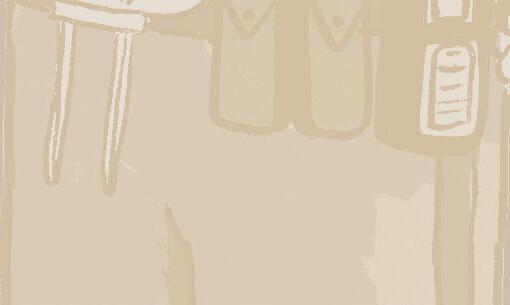
UP having only vague notions of what was playing out in the city; my main priorities for the day were taking my friend, Melanie, to her doctor’s appointment, and lounging around hanging out with my dog, Archer, catching up on some rest. I was using some vacation days I had earned over the past six months with all the mandatory overtime. The 12 or 16-hour shifts, with one or no days off a week, had definitely started to take their toll. But as I sat in the hallway of the doctor’s office, text messages began to flood into my shift’s group chat, messages that I was first inclined to ignore. After all, I was off, and technically I worked midnights, and wasn’t obligated to do anything. “Guys this is serious, they need help.” Like a lightning bolt, that message reverberated through my spine. They… I thought of my coworkers, but more importantly my friend, Justin Nixon, who I knew was currently at the Capitol on duty. There wasn’t much info to go on, neither from our group chat nor from the news at the time, which was around 11:30–noonish, but something started shaking within me, action starting to dance within my bones,
like the first bubbles starting to form on the bottom of a pot of boiling water. Melanie, also a coworker, came out of her appointment, immediately asking what was wrong. I said exactly what I knew, which was nothing, other than what was in the group chat: a call for help.
When we got back to her apartment, we turned on the news: “Protest at the Capitol;” “Riot on Capitol Hill;” “Trump Supporters March on the Capitol.” I’m sure we’ve all seen the footage by now, thousands of people surrounding the Capitol Building on all sides. It was surreal: a moment that looked like it could have been out of a movie was playing out in real time… at the place I work… a place that I should be at this very moment, if it wasn’t for some fortuitous vacation planning. I spent my childhood being fed movies like Black Hawk Down, We Were Soldiers, and Saving Private Ryan, and I always wondered about being in a maelstrom like that, and now here it was. For all the places that the cameras were showing on TV, the only thing I could think of was all the places they couldn’t see and all the places they didn’t have
cameras: the Capitol Visitors’ Center (CVC), the House Floor, the Capitol Detail Office, all places the general public wouldn’t see on film for days, weeks, or even months to come. All the places that my friend might be, and another feeling started to surge within me.
When I was being photographed for an interview about January 6, the photographer said he thought it was awesome that when the shit hits the fan, I take action… I just go. I asked him what he meant by that. He told me that I was someone who just goes, someone who doesn’t hesitate. What an interesting way to think of what transpired, as if, even here, it was black and white: those who go, and those who don’t. It’s far more complicated than that, and it certainly wasn’t instantaneous. Yes, I went, but not without suppressing the feeling that surged within me, that icy grip that clutches the inside of your ribcage and travels through your spine: fear. Yes, I went, but not without wrestling with: What am I going to do about Archer? I wonder where Nixon is, and would I even be able to find him? I don’t give a fuck about that
building, burn it to the ground. I need to protect those people, I need to be there. I can’t leave now, Melanie can’t go and that will crush her. All those things became a paralytic cacophony within my head, but then: “Shots fired on the House floor.” The dam had broken, thought now flooded into action. I got dressed, took Archer to Melanie’s place (I wasn’t sure how long I would be gone, and yes, the thought of death did cross my mind), and drove to the Capitol.
THE FOLLOWING MARCH , after January 6, I left the Capitol Police, and spent the next several months on my parent’s couch in Levittown, PA. My parent’s house is similar to all the other houses in Levittown, one of the nation’s first planned communities. As kids, me and my friends rode our bikes from one end of town to the other and it never crossed our minds that anything was odd here, even though I was one of only three Black kids in the neighborhood… the sameness provided us with structure and, anyway, who cared what houses looked like. The kids living in Pinewood, my neighborhood, all attended Walt Disney Elementary School. Disney himself came to the school's dedication in 1955; there is a picture of him and a historical plaque commemorating the event in the lobby.
ITWASN’T FEAR when I first saw the crowd, but rather a cold recognition that the thing I was encountering was truly foreign and alien to my perception and understanding of the word. As I sat there in my car looking up at the Capitol Building in front of me, and then at the masses of people moving around outside my car, I thought I was looking at a different species: the way these people moved, the way they shouted and chanted, it was like looking at a creature devoid of reason and sentience, like someone put under a spell. I got out of my car and was met with Morales’ pallid face
telling me that Reyes was around the corner. I don’t know if I responded, I think I just turned and started making for the Longworth Building; I knew we could enter there and make our way through the underground tunnel connecting the House Office buildings and the Capitol.
As we made it to the entrance of the Longworth, Reyes caught up with us. Let’s fucking go! Reyes, always full of piss and vinegar, was such a contrast to Morales, who seemed genuinely disturbed. We ran through the Longworth Building— alarms and emergency messages resounding throughout—down the stairs into the basement, into the tunnel connecting the Rayburn Building and the Capitol, where we saw several officers, between six and a dozen, just sitting around, on their phones, doing nothing. We made it to elevators, and took them to the first floor where we were greeted with the sight and smell of blood, and the sound of chaos. They were just in the process of medevacing the woman who had been shot, and a trail of blood lingered as they made their way outside to the ambulance. At this point in time there was no semblance of cohesion or command among the law enforcement in the building—US Marshals, DC Metro, Amtrak Police, FBI, Park Police, and others—so we decided to make our own way to where we were needed, wherever that was.
THEREWAS A GAME designed in the 70’s called “Conway’s Game of Life.” It was a game designed to highlight the simple symmetry of the universe. It consists of hundreds of grid-squares, called “cells,” and is played by turning the cells on or off. On, or off. Alive, or dead. According to the game, those are the two basic conditions to which all life can be broken down. Simple, an object is, or it is not. But to be something is to not be something else. So, if I am a “nigger,” does that mean I am not: a man, a free man, a student, a poet, a brother, a son, a lover, a person, a human?
FIRST THOUGHT was to head upstairs to the rotunda, so we made our way to one of the grand staircases. We could hear it before we could see it. Screaming. Banging. Clanging. Spraying… It looked like a scene from a medieval war movie: two large groups engaged in an all-out melee, some clad in armor, the garb of riot police officers and civilians, who were surprisingly well armed for “peaceful protesters,” all against the backdrop of the GrecoRoman inspired US holy chamber (according to the plaque on the wall, the painting in the rotunda is literally called The Apotheosis of Washington), replete with marble statues and paintings of fighting angels. But, before we could enter the brawl, over the radio a call came out asking for help at North Door, so we made our way back downstairs and headed north.
When we were about 30 yards away, we could see a handful of officers (Capitol Police, DC Metro, and FBI) attempting to drive the rioters back out the door so that they could secure it. I noticed more than a dozen officers crying or lying down or standing around in a small, side hallway, but didn’t think anything of it until we got to the door itself, then it all started to click. The reason there was only one Capitol Police Officer, and the reason that all of the people were getting sick in the hallway, was because the North Door vestibule was laden with a wonderful cocktail of chemical irritants donated by both parties. Filling that small space was our own Sabre Red (pepper spray), tear gas, fire extinguisher coolant, civilian pepper spray, and bear mace. This made it very difficult to breathe if you didn’t have a gas mask or respirator; fortunately, I had my handy-dandy Oakley facemask, which provided a little bit of protection. Morales, Reyes, and I jumped into the fray, helping to force the last few people back outside. For all the buildup to this moment, our actual start into the fray was pretty mild. The last
five or six people that were still putting up a fight had already been pushed out of the interior door into the vestibule, which was a victory. In between the bouts of coughing and the fits of hacking trying to breathe in the fetid air swirling around us, we managed to chain the interior North Door shut with zip cuffs. But just as we fastened the last cuff a call came through stating there were two officers stuck and surrounded by the crowd on the Upper West Terrace–North— right outside the door we just secured and tied shut. I shouted to get the door open and in a matter of seconds the ties were cut. We rushed into the vestibule and were ready to head outside when we were stopped dead in our tracks. The rioters had slid bike racks in front of the exterior door, locking us in.
Me, Morales, Reyes, and the other officers slammed into the door, pushing, kicking, doing everything to get those bike racks out of the way so that we could make it outside to the stranded officers. As we did this, the rioters continued to spray and throw whatever they could to try and impede us. My mask was giving me some protection but Reyes was not
as lucky. When a particularly well aimed shot of mace came through the door, he took the full brunt of it in the face. Morales quickly grabbed Reyes and took him back inside to decontaminate him, just as we managed to get the exterior door open. I was the first one out the door. Let’s go! We’ve got officers stranded out here! I remember thinking I sounded like such an asshole, like someone from one of those movies I used
to watch. As I stepped out, no one came with me.
AS YOU ENTER Levittown from the north you come across a historical plaque erected in 1992 that reads, "This fully planned, six-home style residential community was conceived by the builder William J. Levitt. The first family moved in, June


23, 1952. When completed in 1957, Levittown contained 17,311 homes on 5,750 acres, designed for a population of 70,000. It expanded on the pattern set by Levittown, NY (built 1947-51) and was a landmark in the development of suburban housing in the United States." The plaque does not mention William J. Levitt's "whites only" covenant for owning homes in communities he built.
AFTERTAKING my first steps onto Upper West Terrace–North, the only thing I thought was, I’m going to die. It was a strange sensation— not a fearful realization, or a pitiful admission—like a fact: I was one guy, and there were literally thousands of people standing in front of me with intent to do me physical harm. I continued outside, walking down the steps further onto the terrace, and spotted the officers in question. Before I reached the bottom of the steps I was greeted with yet another bike rack, this one thrown at my feet. I fell face first down the stairs all while being called a “nigger.” As I tried to get back on my feet, I was grabbed and hoisted up. I looked at the man grabbing me—his face was calm, serene even, he was saying not to worry, that they had me… That it was all good… He then dusted me off and patted me on the back. The second between that moment and the next dragged on forever, I could see everything: the man that helped me up, the people foaming at the mouth, shouting, cursing, and throwing stuff at me… The old lady watching in stupefied awe at her surroundings, waving a Trump flag like she was at a Sunday picnic; another lady spraying pepper spray at my fellow officer, Fuss, who was in the fetal position, and the young man with a camera documenting it all… There was no uniformity on either side, some officers were terrified, some officers were eager; some protesters were out to hurt us, some were just out here.
TO BREAK myself down into component parts, into a zero or one. As I attempt to sort through all these labels, I’m taken back to my childhood, to another word: "blight." Not blight as in disease, but blight, or blite, as in “black-light,” or “blackwhite.” Associated terms include “oreo,” “uh-oh oreo,” “niglet,” “nignog,” “moon-cricket,” and “jungle cricket,” all terms that I acquired through the years in the public school system from various sources, including friends, teammates, coaches, and teachers.
MY WAY to Fuss, picked him up off the ground, and shouted at the crowd to move back and give him some space. By this time a few other officers—DC Metro Police— had joined me on the terrace, and they grabbed Fuss and escorted him inside. I went to grab the second officer, Stockhecker, who had been sprayed in the face with mace. I grabbed him and we made our way through the crowd back toward North Door, luckily only having to dodge insults instead of physical attacks. Just a little bit further and we’d be inside, safe to re-secure the door and attempt to lockdown the building again (side note, one thing that people don’t realize, is that when the protesters made their way into the Capitol they pulled the fire alarms which ensured that the exterior doors could not be locked without the system being reset. Essentially, we were unable to secure all the doors as the crowds came in). I started to make my way up the stairs toward North Door.
White… a fl ash of white… it’s so loud. Can sound have a color… and an odor? There’s an odor I can’t identify… no, not an odor: an odor isn’t physical, and this is forcing itself into my nostrils, I can feel it, I can taste it… something in my eyes… I can’t see… I can’t see… I gotta get it out of my eyes… it’s covering me… is it alive? I feel like it’s crawling all over me… I can feel it in my ears… it’s in my mask… I can’t hear… I gotta be close to the door… my god what is that taste?
What is that odor? I can hear… I can hear my name…
Tricoche! Yo! You good?! I could hear Morales but I couldn’t see him. Yo, come get washed off! In movies and TV shows, when they show people using fire extinguishers, it’s usually depicted as a white gas or smoke; what they don’t show is the fact that most fire extinguishers are what’s known as ABC, or dry chemical extinguishers, which use monoammonium phosphate and ammonium sulfate powder. When you spray them at someone point blank into their face, it doesn't just blow their hair back with some white smoke, it douses them in a chemical powder, the powder that now covered me from head to toe, coating the inside of my mask and mouth.
I made my way to the hallway and joined the other officers attempting to use the small bathroom sink to clean our faces and rinse out our eyes, noses, and mouths. Once I cleaned myself up enough to have my vision back, I noticed the dozens of empty water bottles and spent Sabre Red cans strewn about the floor, and for a moment I felt bad for whoever was going to have to clean this up later, the reactivation of all the chemicals was going to be rough on them.
As if all this chaos wasn’t enough, another officer was running around panicking, looking for an automated external defibrillator (AED), as they needed one on the West Front for a civilian who had collapsed. It’s a fascinating phenomenon when there’s just so much going on, so much sensory input, so many options for action; watching the sheer amount of information and choice paralyze a person, the gears behind their eyes spinning so fast that they seize, and all activity stops. The AEDsearching officer had that look in his eyes. I took him to where I knew there was one, then sent him out the back door. As he left I peeked my head out and caught a glimpse of the melee, now Helm’s Deep-esque in scale and ferocity. Even though I was only barely outside it was enough for
me to notice the sheer difference in air quality: Breathing inside was still like being in a fetid, toxic, chemical swamp—for a moment I wondered if this wasn’t actually the chemical irritants I was smelling, but rather the presence and smell of fear, which was just as potent.
WAS BUILT specifically for the housing of returning GIs after World War II, and, thus, most of the homeowners were soldiers, sailors, airmen, and their families. In fact, Levittown homes were sold to servicemen without a downpayment, making them incredibly affordable and accessible. Thousands of soldiers, men trained to exist in uniformity, flocked to a community built with that concept embedded in its foundations. A community that created a horrifying fractal-like experience: no matter where you zoom-in or zoom-out, it all looks the same. In war, the enemy can be identified by one who is not wearing the same uniform, as one who does not look like you. In war, you attack the enemy, you kill it. What do soldiers do when they aren’t at war, when they’re in suburbia? What does combat look like in the suburbs? It looks like people standing outside of the home of the first Black family— the Myers—to move into Levittown in 1957. The Myers lived on the corner of Daffodil and Deep Green lanes. William and Daisy Myers moved to a place built by a man who refused to sell homes to Black families, a place of uniformity. As a child, I spent countless hours just up the street and around the bend from the Myers home at a family friend’s, on Dewberry Lane. Listen to the names of streets of Levittown: Daffodil, Deep Green, Dewberry…perfectly placid words that hide the menace of the people who stood outside the Myers' home with signs letting them know they did not belong.
respite before I was told it was time for us to start moving back up towards the Rotunda and aid the officers up there in pushing the rest of the rioters back outside of the Capitol. We made our way through what is known as the Crypt first, which was now being used as a CCP (casualty collection point), before making our way up to the Rotunda. In the Crypt, dozens of officers in various different uniforms, belonging to myriad different agencies, lay strewn about the floor in various states of injury and fatigue. Further up the hallway, the AED had delivered its report on its patient and now CPR was needed. As I ran by, still covered in white powder from the fire extinguisher, some people looked at me as if I were a ghost—but I was a living ghost, unlike the CPR patient.
We were up the stairs and back in the Rotunda. By the time I made my way through the crowd of officers and to the door, I was greeted with a surprise: Nixon. When you work a job in which everyone wears the exact same uniform every day, you begin to be able to pick people out by their haptics, by the way they hold themselves. Even though Nixon was wearing full Civil Disturbance Unit (the polite way of saying "riot squad") equipment, I was able to pick him out no problem. I pushed my way up through the group and slapped him on the shoulder pad.
Hey, man…what are you doing here? His eyes really took me in. What happened to you?! Are you alright?
Come on, you didn’t think I’d miss all of this did you? I couldn’t let you guys do this alone. And this? Oh, Morales says they got me with a fire extinguisher when I was trying to come back inside. I’m good. You good?
Yeah man, I’m good. Crazy. Just crazy.
You seen Hoyte?
Earlier. I haven’t seen him in a while, we got separated.
department would have someone in an event as crazy as this with a uniform as pristine and clean as this woman’s—entered and attempted to get all of our attention. It was impressive and insulting at the same time, what could she have possibly been doing this entire day to not have a single wrinkle, a single speck of dust on her white uniform? I couldn’t hear what she was saying, but it became clear through the actions of the other officers that it was time to lock down this door. The plan was to have the officers in hard gear (riot gear) establish a perimeter outside so the officers inside could secure and lock the door. The hard gear officers would be locked outside once the officers inside secured the door; locked outside with an angry mob. What happened next was exactly that: Nixon, being the only officer at the door in hard gear at the time, walked outside expecting to have support but quickly found himself alone on the other side of a locked door.
WHENI ASK MYSELF where the people I grew up around picked up their casual racism, the answer is all too apparent: it's built into the very foundations of the towns in which they all grew up and it lives in their mouths, in their arteries, in their hearts, like bacteria—like plaque.
COMING BACK AGAIN to North Door, there was only a brief
Just as we were talking, an officer— Capitol Police for sure—no other
IT WAS MY JOB, along with the few other midnight officers that managed to trickle in, to do a sweep of the interior of the Capitol, searching for any people or explosives that might still be lingering around. I spent my whole Capitol Police career, about four years, on midnights walking around in the dead of night: 11 p.m.–7 a.m. I walked in the cold, in the snow, in the heat, and in the rain. I walked in dark empty office buildings; in dank, decrepit basements, and derelict attics; chambers dating back to our nation's inception, surely filled with the ghosts of pompous white men. Never was I more frightened walking
around than I was in the Capitol in the aftermath of January 6, and never was I more exhausted. The day had started to take its toll, and my body was finally running out of adrenaline. It’s a moment that they train you for, so you know when you’re most vulnerable, when mistakes are most likely to happen. Had I already missed something? What if I missed a closet door in that last office? Did I check under that second desk? I can’t remember. Moomau said she was going into this room, didn’t she? Or did she say she was going into the next one? What if I’m searching for someone who’s at least as good at evasion as I am, would I be able to catch myself?
But then a call over the radio: They were sending in the K-9 units to do sweeps of the building and they didn’t need us anymore. I made my way out of the labyrinthine bowels of the Capitol to the East Front and found some of my shift mates. It was just before 10 p.m., all of us there technically before our shift started. We had no official duties or posts to return to at the moment, we just enjoyed the cool air, and the strange sight of National Guard APCs (armored personnel carriers) rolling onto the deck.

TO “Conway’s Game of Life,” to be something is to not be something else, but I don’t believe that. I know I am a complex of Black and white, man and student, poet and brother, son, lover, person, human… and I think back to the words of F. Scott Fitzgerald’s inaugural character, "I know myself, but that is all."
MADE HIS WAY over to us, saying he was going to go grab his stuff from the CVC. I went with him, having nothing better to do. In order to get back down there we went through the Crypt, where the CCP was, and we found Hoyte sitting upright on a gurney, arm in a sling and hand wrapped in bandages. Despite the obvious pain, he couldn’t hide his excitement at seeing us.

...What the fuck.., he said. We all just laughed, what else was there to say? Hoyte filled us in on what happened to him: someone had hit him with a pipe in the collar bone and hand, he’d be recovering from this injury for months afterwards. We shared a moment of levity on a terrible day, and it reaffirmed what I had known before I even came to the Capitol: the only reason I came was for these two, for my friends. The medics took Hoyte to the ambulance. Nixon and I made our way back down into the basement of the Capitol into the CVC, which was now open again, the lockdown being over. There was no one else down there, normal for midnights, but for some reason, now, it was strange. Perhaps it was because we knew, even if not consciously at that moment, that it would be months, if not longer, before the CVC was filled with visitors again: this silence was now everyone's norm, not just ours.
WHENI WAS growing up, there was no historical plaque in Levittown commemorating how the Myers were forced to endure
three solid months of harassment, intimidation, cross burning, and 24-hour police protection. No plaque stating the mob that stood outside the Myers' home was not a homogenized group: some were curious, some violent, some there only because their neighbors were, and others looking to stop anything like this from happening again. There was no plaque stating that in Levittown, PA, on the corner of Daffodil and Deep Green Lanes, William and Daisy Myers refused to back down to all that mindless hate.
NIXON
AND I SAT on the floor of the CVC for an hour, maybe longer. I wish I had the words to describe that conversation to you, to explain what Nixon’s smile looked like behind all that fatigue. I wish I could show you my hand, how it was bruised and shaking, swollen up so much that I couldn’t touch any fingers to my thumb. I wish I could give intimate details as to what we said, what we talked about, but I can’t. There are certain things in this world that are ineffable... But I will say this: in the aftermath of that day,
despite all that happened, two friends sat next to each other, laughed, and shared a moment of happiness.
Of course, I was the lucky one, because once 11 p.m. rolled around and they were establishing what was going on for the night, I went home while Nixon went down to the detail office where Sicknick collapsed, another person in need of an AED. Early the next morning, Sicknick would die.
In March of 2022, Congress ordered a plaque to be created, requiring "listing the names of all of the officers of the United States Capitol Police, the Metropolitan Police Department of the District of Columbia, and other Federal, State, and local law enforcement agencies and protective entities who responded to the violence that occurred at the United States Capitol on January 6, 2021."
IT'S JANUARY 6, 2024, and there's still no plaque that commemorates Daisy and William Myers buying a home in Levittown. If a plaque ever does get made, I hope it documents the violence, yes, but I also hope it celebrates the joys the Myers found in the neighborhood. Celebrates the awe they experienced watching their children Billie, Stevie, and Lynda hit milestones growing up. I hope it documents the meals they loved and the friendships they made… I hope it tells a human story.
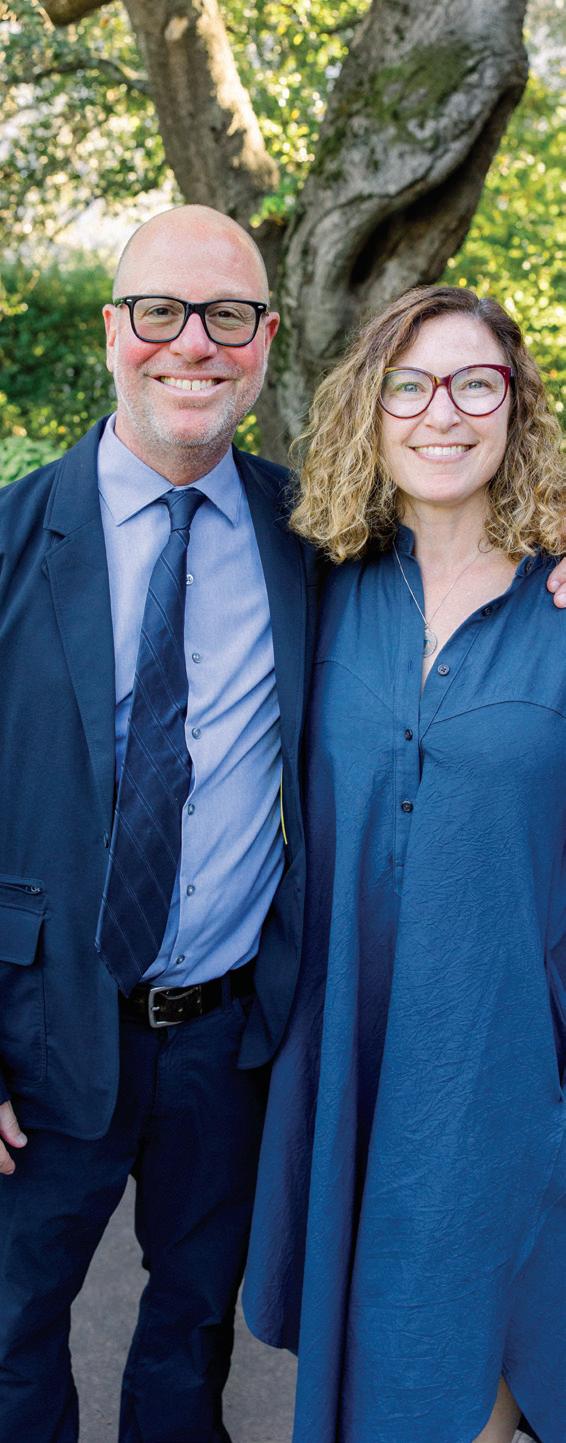
By Greg Kohlert '96
I APPLIED to College of the Atlantic as a transfer student after an experience at a big university failed to engage me and I found myself struggling in school. At that point in my life I needed someone to give me a chance, and COA took an interest in me and gave me that chance. Once I was on campus, I found an intellectual and academic culture that was tremendously inspiring. The work was hard and it gave me a deep sense of satisfaction. I found great joy in both the work and in my friendships. It was a wonderful time to learn and grow, and I can never thank COA enough for that.
My career has been in education, first as a teacher and most recently as a headmaster, always serving kids with learning differences. Our culture at the school, our attitude toward teaching, is that we don’t give up on kids. While I can’t draw an absolute line from my time at COA to this culture of work, I can’t ignore the similarity either. I have always appreciated the opportunities COA gave me, and I believed it was my job to do the same as a teacher and school head. COA was also the first place in my young life where the arts and sciences were studied together. Their interconnectedness impressed me, and that helped me further my skills in each. In my work in education, we fuse the clinical and diagnostic science of understanding cognition and learning with the art of great teaching. The roots of that work run directly back to what I learned at COA.
I am a member of the Black Fly Society because I feel indebted to COA. COA is a special place, and it is important that COA remains an option for students. I am also a member because alumnx support makes a positive impression on outside donors and prospective students, and regular donation allows the administration greater freedom in planning. I encourage every frequent donor who continues to care about the COA mission to join the Black Fly Society
To learn more about the Black Fly Society or become a member, please visit coa.edu/blackflysociety







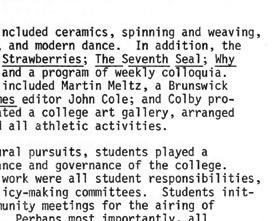
If you have documents or images you’d like to add to this important collection of ephemera, please email archives@ coa.edu.







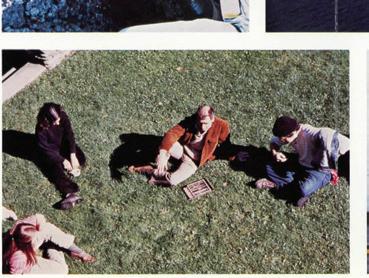
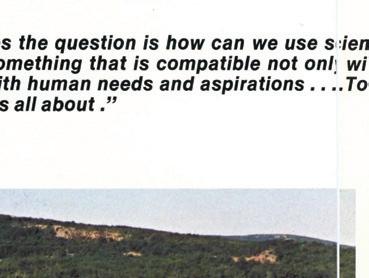
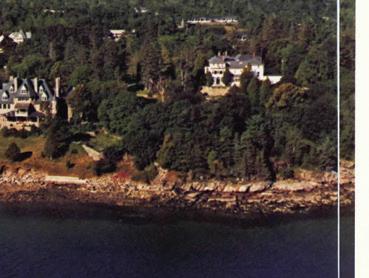

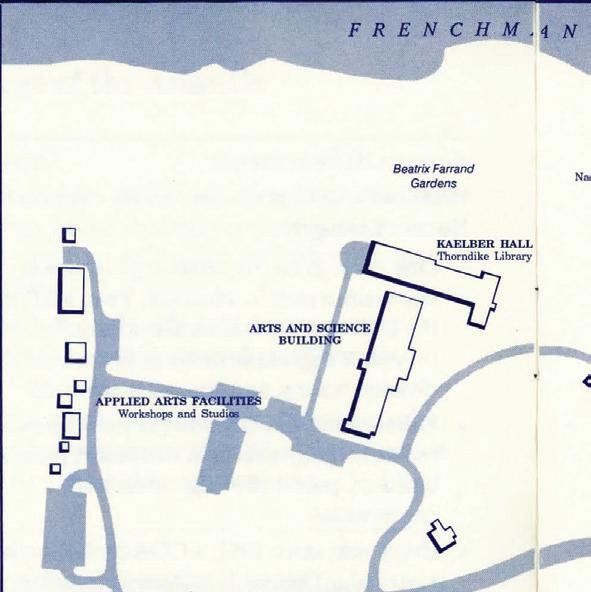





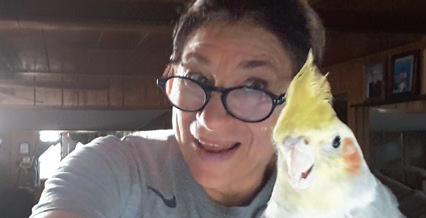


'77 was among five master canoe artisans honored with Legislative Sentiments for their talents and efforts to preserve traditions that are thousands of years old. Presented during the Monson Arts and Cultural Resources "Canoe Land" in July at the Monson Summerfest, the sentiment includes, "This Wabanaki tradition has been sustained for centuries by Wabanaki and Northwoods makers, whose creativity, skill, and knowledge of materials, design, and construction serve as a model for future makers and generations to come."
1978 After completing her education and going off to a career with horses, LIZ LUNDBERG ('78) has always been grounded in the curious study of human ecology. Of all things that are possible in the world, Liz is most deeply committed to bridging ideological, political, and relational divides. To that end, Liz is drawn to challenging relationships to nurture. As we seem to sit on the cusp of a new civil war, she believes she is in a useful niche. Anyone similarly inclined is welcome to connect and share notes. The objective is to shift the nature of our dialogue from adversarial to collaborative.

TIMMON MILNE WALLIS '78 published his latest book, Warheads to Windmills: Preventing Climate Catastrophe and Nuclear War in December 2023. He is living in western Massachusetts after a year in Brussels and a year in DC (and about 50 years in the UK!). Tim is running a national coalition of organizations working together to address those two existential threats, and can be reached at timmon.wallis@ gmail.com.
FRANK TWOHILL
'79 recently won his 17th two-year term on the Branford, Connecticut Representative Town Meeting; this is the 30-member town legislative body. Frank has served as an RTM Representative since 1990. In November 2023, Frank was unanimously elected clerk by the body. From 2005 to 2022, Frank served on the COA Alumni Association Governing Board. During his terms, Frank worked to commence COA reunions. Frank continues his legal practice in Connecticut, and graduated from the school for environmental law rated #1 in the US, Vermont Law and Graduate School, in 1985. Frank was also a member of the COA 50th Anniversary Celebration Committee in 2022.
LOIE HAYES '79 is now providing energy efficiency consulting to fisheriesrelated businesses in Massachusetts. Her employer, Green Energy Consumers Alliance, is teaming up with Fisheries Friendly Climate Action and others on a federally funded Energy Efficient Fisheries project. If you have case studies of ways to conserve energy or tap into renewable power at a shoreside facility, send them Loie's way!
Potuck Farm, the residential cooperative where JIM SENTER '85 resides north of Durham, North Carolina, established a conservation easement on 100 acres of their common land this year and is in the process of developing a permaculture plan for the farm. The first chapter of his book on the New Deal work program on the Outer Banks was published in Tributaries, the journal of the North Carolina Maritime History Association under the title, “Building the Bridge to Paradise: The Early Years of Automobile Tourism on the Outer Banks, 1926-1931.” Additionally, as a member of the board of the Fertile Ground Food Cooperative, Jim took part in finding a site and negotiating a lease for the store, hiring an architectural firm, and helping engage co-op members in site and store design.

Finally, early in the year, Jim and his motorcycle had a run-in with a deer that led to six broken ribs, a collapsed lung, and a two-day stay in the trauma ward. (He’s still a devoted, year-round rider.)
Maine Natural History Observatory (MNHO), a nonprofit dedicated to collecting data and creating educational tools to help better understand Maine plants and animals, is celebrating its 20th anniversary. MNHO is marking its anniversary with online content highlighting the organization's history, and releasing a limited edition sticker featuring a Purple Sandpiper design by Addison-based artist, Jada Fitch. The sticker is available to all new and renewing members at any level. MNHO was founded by GLEN MITTELHAUSER '89 in 2003. Maine didn’t have an organization dedicated to collecting, interpreting, and maintaining the data crucial for understanding changes in Maine’s plant and wildlife populations, and Glen decided to step into the role. Now, two decades later, over 75 islands have completed botanical inventories and five field guides to Maine plants have been published including the award-winning Plants of Acadia National Park. For more



information about MNHO’s history and 20th Anniversary Campaign, visit mainenaturalhistory.org/20-years.
'99 spent the last few years doing emergency work for the City of New York. First, helping to set up the largest test and trace response to the COVID-19 pandemic in the United States, and now helping to support the humanitarian crisis by housing NYC's influx of migrants. She also picked up a pandemic hobby of making pottery.
'03 was awarded the NMFS-Sea Grant Fellowship in Population and Ecosystem Dynamics. The fellowship is a highly competitive national program that supports research on the development of quantitative methods for use in marine fisheries management. Katrina's fellowship research will focus on the incorporation of local and dynamic ecological processes in stock assessments, especially for use in systems like the Gulf of Maine, where rapid changes have been observed.
This year, KATE HASSETT '08
attended Smith College’s six-month, post-grad certificate program in palliative and end of life care to deepen her work as a Licensed Clinical Social Worker on Maine Medical Center’s Palliative Care Team in Portland, Maine. In December 2023 she passed the exam to become licensed as an Advanced Palliative and Hospice Social WorkerCertified. When not at work, these days she enjoys knitting, reading, walking around Portland, playing mahjong with a group of people every other Sunday, taking art classes, perusing craft fairs, visiting family and friends, and basking in the companionship of her dog, Winnie.
BECKY WARTELL '10 and Seven Siegel are excited to announce the birth of their baby, Vi, on October 25, 2023. Becky was really amused to realize that her pregnancy care team was made up of COA alums: OBGYN DR. JOSH SINKIN '03, acupuncturist ANN HELFRICH '00, and doula ARWYN SHERMAN '13 JAKE WARTELL '12 and DEVINA IYER '16 are thrilled about their new niece.
2013 After seven years working in independent bookstores, being named a 2021


Publishers Weekly Star Watch Honoree, and championing diverse voices, bookseller equity, and pay transparency, MARIANA CALDERÓN '13 stepped away from frontline bookselling in July to accept a position with the American Booksellers Association (ABA) as DEIA & member relations manager. Her work includes supporting indie bookstores across the country and overseeing the ABA's work to ensure a continued and growing focus on diversity, equity, inclusion, and access in all aspects of the organization. Currently located in southeastern Connecticut, she will be moving with her spouse back to Maine in summer 2024. While she misses bookselling dearly, she's enjoying the freedom of remote work, showing art in local galleries, and is looking forward to connecting with more alumnx in the Bangor area next year.
LILLY DEMERS '13 and Colin Ogilvie were married in Conway, Washington in July 2023. Lilly graduated from the Middle Way Acupuncture Institute in 2020 and works as an acupuncturist and a gardener in western Washington.
MADDY MAGNUSON '13 and their partner Ross joyfully welcomed Mika Ray Magnuson into the world



this August. Determined to be a little Leo baby, Mika arrived three weeks early after a quick, two-hour labor. They are pictured enjoying their first staycation at the Seguin Tree Dwellings in Georgetown, Maine.
NATASHA KRELL
'16 was featured in an interview with Federal News Network on the topic of Artificial Intelligence (AI). The interview focused on STEM recruitment for federal agencies and the National Geospatial-Intelligence Agency's use of AI.
IAN MEDEIROS '16 and Panchali Nag got married on December 28, 2022 in a small ceremony at Ian's parents' home in Rehoboth, Massachusetts. Ian is wrapping up a PhD in biology at Duke University. He and Panchali are currently living in California, where Panchali is a visiting assistant professor in the mathematics department at UC San Diego.
SHLOMIT AUCIELLO '17 began the year at a Buddhist meditation retreat in Southern New Hampshire. In April, she turned 70 and “began considering how I want to experience life and mortality
as I approach the great mystery. As year's end approaches, I am two weeks short of my last day of scheduled employment as adult education program assistant at Mid-Coast School of Technology. My column, ‘Letter from Away’ moved from the CourierGazette newspaper to the Free Press in September, as well as at medium.com. In October, I received my third Maine Press Association award, proving that journalists in Utah like my writing. I spent 18 days in August writing music for the lyrics I wrote as part of my senior project (a musical screenplay). Renting a quiet apartment near Cobscook Bay, I completed four songs: ‘Opportunistic’ (overture); ‘Back and Forth,’ a love song in the form of a lecture on the life cycle of northern shrimp; a blues tune called ‘Shake Your Rug’; and a eulogy in four-part harmony called ‘Pushing Up Daisies.’”
URSA BECKFORD '17 is set to graduate from Georgetown Law in May, and next winter will start working as a trial attorney at the Office of the Colorado State Public Defender. He has also been selected as a 2024 John Robert Lewis Fellow by the Faith and Politics Institute. The year-long program brings together emerging leaders who are committed
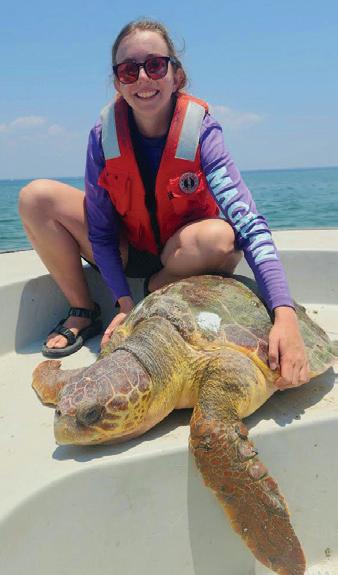
to creating positive societal change and studying John Lewis's nonviolent philosophy, which was successfully used in the Civil Rights Movement.
2018
JESSICA ARSENEAU '18 graduated with an MA in museology at Université du Québec in Outaouais. She currently works as an educator at the National Gallery of Canada, and in her free time makes things (sewing, printmaking, etc.) and spends time hiking with ROMAN BINA '16
ARLO CRISTOFARO HARK '18 and JOSIE TROPLE '18 welcomed their daughter Ammi Delano Hark into the world in February. They are living in Northfield, Minnesota, and are the founders of an ecological grazing company that works with solar developers to provide vegetation management services.
2019
LEAH RUBIN '19 was awarded a prestigious National Science Foundation Graduate Research Fellowship to study historical ecology in Maine and Fiji through


her position as a PhD student at The State University of New York College of Environmental Science and Forestry. She also continued the research collaboration that came out of her meeting with Elizabeth Sibert, a guest speaker in COA professor Sarah Hall's Climate Change course. Their first paper published in the journal Science on dermal denticles came out in 2021, and they recently published an article together with the help of other co-authors titled "Neurodiversity: An Important Axis of Diversity in Ocean Sciences." She will be joining Dr. Sibert at her lab at Woods Hole Oceanographic Institution as a visiting student this fall.
JOLIE LAU '19 graduated with a master's in architectural engineering: environmental design from the University of Bath and was awarded “Best Overall Performance.” Her thesis explored the elusive Module D's (reuse, recovery, and recycling potential) impact on the life cycle of conventional façade cladding materials. Following graduation, Jolie accepted a position as a facade engineer with Arup and was quickly promoted to graduate facade engineer.


After nearly four years working in sexual violence support and advocacy, ELISE MARTIN '19 is now celebrating her second year of business as owner of Lily & Quartz, a small business specializing in gemstones and jewelry. She has enjoyed meeting customers at markets and craft fairs all over southern Maine. In the fall, Elise will follow interests she first explored in her senior project studying law and abortion access by matriculating at the University of Maine School of Law.
In 2023, EMMA DAMM '22 became a resident of Florida. She planned to work a temporary biology internship over the winter and then return to Maine, “but one internship turned into two, and then I landed a yearround job. I now work as a field biologist for Florida's Natural Heritage Program. Our organization tracks occurrences of rare plants, rare animals, and natural communities to aid in their conservation throughout the state. I want to emphasize a message to any science-geared COA students who are struggling with doubt: It is possible to have a career in science with a human ecology degree. Be proactive, and don't give up!”
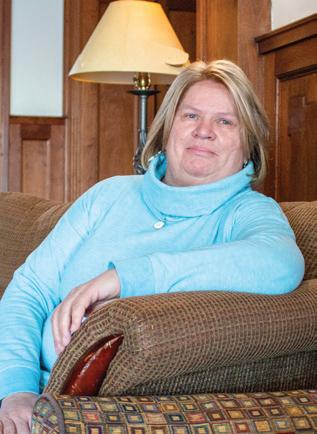
TRICIA PINKHAM
Business office manager 1988-2024

DON BAREISS
Night watchman/Custodian 2018-2024

PETERSEN Professor of biology 1990-2024
Professor of biology 1995-2024

DRU COLBERT
Professor of arts and design 2003-2024
DAN ASKED ME to send something for this issue of COA Magazine… a token of me to signify my impending retirement, I froze. I couldn’t, or rather wouldn’t, give it any thought. It would mean that I had to admit once more that I was leaving the day-to-day meanderings and musings of this community that has been family since 1999. I will truly miss being a full part of this caring culture that has taught me so much over the years about being human. COA has heart and I will miss that soft beat.
This past winter term, Jodi Baker and I worked with students to reinvent the original ice opera “Graupel” (page 5) that I made for the island community “way back” in 2007. Doing an immersive collaborative project class like this with loads of room for invention, making, and sharing, is what I find to be the best kind of COA experience, and it has geared me up for years of more hard work in the studio.

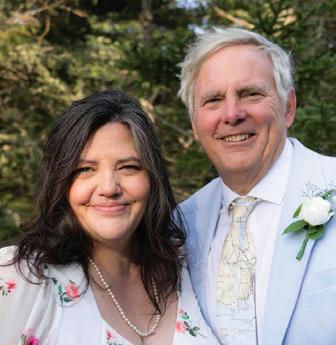

Sharpe-McNally Chair of Green and Socially Responsible Business JAY FRIEDLANDER continues to expand the reach of Profit Decoder, an online tool enabling entrepreneurs and small businesses to quickly answer questions about how changes in price and costs will impact their profitability. Jay ran programs for hundreds of small businesses with numerous economic development groups in Maine, such as SCORE, Maine Center for Entrepreneurs, Maine Sea Grant, Mount Desert 365, Sunrise County Economic Council, UpStart Maine, and other organizations. In the fall of 2023, Jay went to Japan where he led the first COA study abroad program to Japan—the Human Ecology Lab in Ōsakikamijima— with ABBY BARROWS MPHIL '18
After leaving Japan, he joined numerous COA staff and faculty at the Society for Human Ecology conference in Tucson, AZ, presenting on COA’s sustainable business pedagogy.
ZACH SOARES '00 is the new director of audio visual services at COA. Zach is also the deputy Title IX coordinator, as well as a new teaching staff member leading classes in audio production and recording.
In the summer of 2023, Steven K. Katona Chair in Marine Sciences SEAN TODD inaugurated GOMSIP II, an extension of the original Gulf of Maine Stable Isotope Project that examines the impact of climate change on rorqual
diet. He also spent time in Alaska in August, and Antarctica in December, aboard Seabourn's Odyssey and Venture, respectively, working as a polar guide and collecting data for the Antarctic Humpback Whale Catalog.
Richard J. Borden Chair in the Humanities BONNIE TAI is editing a book, whose working title is Writing College into Life, with first-generation, low-income, and BIPOC COA students and recent graduates contributing chapters. Bonnie spoke as an invited panelist on “The Power of Partnerships: Empowering Everyday Resilience,” at a plenary of the Annual Conference of the New England Educational Opportunity Association. She served on the organizing committee and cofacilitated sessions for in-person and virtual meetings on “Critical Exploration: Sharing, Supporting, and Expanding Our Work.” Bonnie co-organized two gatherings (April and September) co-sponsored by Unified Asian Communities, The Jackson Laboratory, and the MDI YWCA, building community with those who identify as Asian-American or Asian heritage and their partners and families. She served as a Hancock County Advisor selecting Community-Building Grantees of the Maine Community Foundation and on the Hancock County Teacher of the Year Selection Committee. Bonnie served on the planning committee for Indigenous People's Day events and performed in the Bar Harbor premiere
of Jason Brown, a.k.a. Firefly's Suite for Orchestra—commissioned by the Bangor Symphony Orchestra. In collaboration with the Bar Harbor Fire Department, Bonnie designed and offered workshops for EMS instructors/coordinators on “Skills-based Evaluation” and “Giving Feedback” to area personnel.
This spring, COA Allied Whale researchers were honored to be invited as keynote speakers at the third Humpback Whale World Congress, held in Santo Domingo, Dominican Republic. Retired Allied Whale research associate PETER STEVICK '81 was recognized as honorary president of the Congress. Allied Whale director of photo-ID research LINDSEY JONES MPHIL '18 gave an invited talk on the history and current state of humpback whale photoID research in the North Atlantic Ocean.
Lecturer in writing MARTHA ANDREWS DONOVAN looks forward each July to the multi-day celebration of the work of Maine writer Ruth Moore (1903-1989) that is held at the Bass Harbor Memorial Library, just a short walk around the corner (or through the woods) from where Martha has lived since moving back to Maine seven years ago. As part of the Ruth Moore Days celebration last summer, Martha (who also serves as a member of the library’s Board of Trustees) read her poem “There”—an homage to Ruth Moore and a musing on place, longing, and what it means to leave and return.
Elizabeth Battles Newlin Chair in Botany SUSAN LETCHER took two trips to Costa Rica this year. In June 2023 she worked with graduate students in an Organization for Tropical Studies course on a short field project on forest dynamics in the lowlands. In November and December, she returned with Conrad Kortemeier '26 and Lucian Vazquez '25 to measure forest recovery in a reforestation experiment that she and Dr. Alex Gilman (EARTH University, Guapiles, Costa Rica) have been running since 2009. Susan continues to publish high-impact papers in tropical forest ecology, most recently in the journal Global Change Biology. On MDI over the summer, Susan and author Kim Stanley Robinson discussed climate change, science fiction, and the human future as part of the COA Coffee and Conversation series.
DAVE FELDMAN served as India site director and faculty member at the Complexity Global School (CGS) for Emerging Political Economics, held in Mumbai, India. This program, a twoweek school for graduate students and professionals, is a new initiative of the Santa Fe Institute (SFI), in collaboration with a number of universities in the US and abroad. Dave gave two lectures at the CGS: one on dynamical systems and one on the philosophy and epistemology of modeling. Dave also directed SFI's month-long Complex Systems Summer School in June in Santa Fe, New Mexico.
After 17 years together, manager of alumnx relations JEN HUGHES and David Rockefeller Family Chair and T.A. Cox Fund in Ecosystem Management and Protection KEN CLINE made it official in a small, oceanside wedding on Sept 2, 2023. They partied with family and close friends at a reception on The Turrets' porch and completely forgot to take a photo with the COA faculty, staff, and alums who joined them to celebrate their marriage.
Emily and Mitchell Rales Chair in Ecology CHRIS PETERSEN continues to work on multiple grants and organizations on a variety of issues, including climate change, fisheries co-management, aquaculture, and ecological and community sustainability
focused on Downeast Maine. The past year he has been focusing on completing several multi-year studies, including a student survey of threats to the marine environment that started in 1992, a sea cucumber reproductive biology study that began almost 20 years ago with funding from the Rockefeller Fund, a five-year clam recruitment study funded by the Maine Shellfish Research and Resilience Fund, and a study of fisheries co-management in Downeast Maine funded by the Broadreach Fund. He is also working on handoffs of several of the partnerships where he represents COA before he retires, including the Downeast Fisheries Partnership, the Downeast Conservation Network, and the National Institute of Health Maine Biomedical Research training grant (known by the acronym INBRE).
In November, Dorr Museum director CARRIE GRAHAM, Thorndike Library co-director CATHERINE PRESTONSCHRECK, Thorndike library technical services librarian HANNAH STEVENS '09, and arts and design professor DRU COLBERT presented at the 2023 New England Museum Association Annual Meeting in Portland. They shared the design, goals, and outcomes of the course The Acts and Arts of Collecting, which they created and co-taught with former library director Jane Hultberg in spring 2021. This unique online course, a collaborative examination of collections from various perspectives including conservation, curation, and exhibition, was open to the local community of collections professionals, and introduced students to a diverse set of museum, archive, and library professionals from around the country as guest lecturers.
W.H. Drury Professor of Ecology/ Natural History JOHN ANDERSON attended the Northeast Natural History Conference with five students. Each presented original work built around research on Great Duck, MDI, and Mount Desert Rock. They met up with alums HALE MORREL '12 and CHLOE CHEN-KRAUS '14 at the meetings, and John chaired a session on “Seabirds East and West.” Summer involved extensive work on Acadia National Park seabird islands, as well as our beloved Great Duck, and ended
with Island Life's two weeks out to different islands up and down the coast, from Monhegan to Grand Manan. In October, John took six students to the International Waterbirds Conference in Florida, where AUTUMN PAULY '26 took second place in the Student Awards with a poster on her work on Great Duck.
Director of the writing program and professor of writing and rhetoric SU YIN KHOR co-authored a new book, The Practical Nature of L2 Teaching: A Conversation Analytic Perspective (Routledge, 2023) with Joan Kelly Hall and Yingliang He. The book carefully examines the interactional and multimodal teaching practices in second language (L2) classrooms, such as turn-taking practices to manage student participation and teacher questions to facilitate learning in whole group activities. She was also the lead author of a book chapter, “Multilingual Writing Teacher Identities and Institutional Ecologies: A Collaborative Narrative Inquiry," published in an open access collection titled Nonnative English-Speaking Teachers of U.S. College Composition: Exploring Identities and Negotiating Difference (The WAC Clearinghouse / University Press of Colorado, 2024). The chapter sheds light on writing teacher identities and the role of programmatic infrastructures in creating space for diverse identities and literacies in first-year writing classrooms. In March 2024, Su Yin also presented research findings from a study about immigrant women’s writing and literacy learning at the American Association for Applied Linguistics AAAL in Houston, TX to engage in broader discussions about gender equality in educational contexts.
ROSIE CHATER '25 and BRIDGER BUCK '26 both received their Royal Yachting Association RYA Skipper Licenses through two separate independent studies with TOBY STEPHENSON '98 over fall term 2023. They get credit for it, but Toby considers it more than just credit. They flew to London to take the written and practical exams, and it was way more work than just an independent study. Toby published an article in the Maine Policy Review titled, “The Conflict with



Lobstering, and Why Whales Are Critical to Ocean Health and the Gulf of Maine.” In summary, it attempts to show that, while lobstering is not without important value to our culture and economy, a decline in mega-fauna, such as the right whale, is foretelling of a much greater concern that may impact the future viability of not just lobstering, but the entire coastal community of our state.
David Rockefeller Family Chair and T.A. Cox Fund in Ecosystem Management and Protection KEN CLINE and SOPHIE CHIVERS '24 presented at the XXV Conference of the Society for Human Ecology in Tucson, AZ in November 2023. Ken and Sophie gave a talk entitled, "Sharing is Hard—CoManagement of Public Lands with Tribes in the United States."
This winter, on the 6th of December, faculty member PALAK TANEJA married her long-term, longdistance partner Arshad Akbar Karumbamkandathil under India's Special Marriage Act. Here's to hoping that he will be able to join us in Bar Harbor before fall.
While on sabbatical, Anne T. and Robert M. Bass Chair in Earth Systems and GeoSciences SARAH HALL traveled to two locations to engage with COA students and faculty to pursue professional development opportunities. She spent three weeks in Yucatán, Mexico with the COA Spanish immersion program studying Spanish and working with faculty to consider potential future collaborations and
field experiences for students. In May, Sarah joined Dorr Museum director CARRIE GRAHAM, ecology professor emeritus STEVE RESSEL, and COA students on a portion of their monster course to Costa Rica as a guest geology instructor. She met up with three COA alums who are pursuing graduate degrees in Sweden: SARA LOWGREN '20, SAHRA GIBSON '20, and PATRICIO “PATO” GALLARDO GARCIA FREIRE '18. Sarah continued writing projects into the summer months including a book chapter on the geology and tectonics of the Cordillera Blanca, Peru, co-authored with COA alum ALBA MAR RODRIQUEZ PADILLA '18. Sarah is currently on leave from COA pursuing an American Association for the Advancement of Science Science and Technology Policy Fellowship in Washington, DC where she is positioned in the Landslide Hazards Program of the US Geological Survey.
While on sabbatical, Rachel Carson Chair of Human Ecology SUZANNE MORSE had the pleasure of spending two months in Norway, where she taught and collaborated with agroecology colleagues at the Norwegian University of LIfe Sciences in Ås. After finishing up her work at NMBU, Suzanne traveled around Scandinavia to catch up with old friends and alums. While in Bergen, she visited with former COA professor HEATH CABOT and adorable son Lorenzo and connected with an anthropologist working with Maine fishermen. After returning from Bergen, Suzanne traveled to Copenhagen, visited the truly remarkable Louisiana
Museum, and dined together with LISA BJERKE '13, MPHIL '16 and Mette Vaarst. During a short visit to Malmø, she also visited Lund University and caught up with DOM ARSENAULT '21, who had just finished his master's in human ecology. For the last month of her sabbatical, Suzanne met and interviewed seed savers across the UK, starting with the innovative London Freedom Seed Bank who connected her with farmers and seed collaboratives in each region of the UK. Suzanne spent 10 days in Totnes, Devon, the original transition town, where she met with Satish Kumar (founder of Schumacher College), the founders of a small local seed company, and with members of the GAIA foundation that have established seed collaboratives throughout the UK. Upon leaving Totnes, Suzanne traveled north to Edinburgh and met up with Bruce Pierce, friend and colleague from COA's collaboration with Organic Research Centre in the UK. From there, she went to visit the Bowhouse, another center of innovation in Anstruther of Fife. Bowhouse also serves as a social center and while Suzanne was there, T.A. Cox Chair in Studio Arts NANCY ANDREWS and Linda Smith performed work from their album, A Passing Cloud. Suzanne became a dedicated fan, following Nancy, arts & design professor DRU COLBERT, and Linda to Glasgow and then London for their final concert. Suzanne finished up her UK visit with a lovely dinner and walk through London with YANIV KORMAN '18
BY GREGORY STONE '82
WITH SUSI Newborn the day a French intelligence diving team placed two limpet bombs on the Greenpeace ship, Rainbow Warrior, and sank her as she lay tied to a pier in Auckland, New Zealand. It was July 1985, and Susi and I were in one of those apartments COA students lived in on Main Street across from Don's (Shop N Save) near the old video rental store.
Even though Susi no longer worked for Greenpeace and was studying human ecology in Maine, she was on the phone all day and night with the Greenpeace organization and the international press.
Rainbow Warrior was on its way to protest nuclear testing by France in their South Pacific territories. It was night in New Zealand, and supposedly the ship was not occupied by people. After the first explosion blew a fatal hole below her waterline and she was sinking fast, four people went on board to remove personal items. Five minutes later, the second explosion killed photographer Fernando Per. Three others got off in the nick of time, one was Susi’s first husband, Martini, who I knew. Martini was a Dutchman who—along with Susi and other French, Dutch, and English young people—founded Greenpeace a decade or more before.
Warrior with funds from World Wildlife Fund-Europe, who was the lead NGO trying to stop commercial whaling. At that time, there were so few whales left in the oceans because of the failure of the International Whaling Commission to follow its mandate to keep populations of whales at sustainable levels.
global press and the whaling industry lost what we call today their “social license”, as the public would no longer tolerate it.
Susie’s parents were from Argentina, but she was raised in the UK. To me, a Boston kid who hadn't traveled much, she was a charismatic, energetic, and exotic-looking British woman who respected science and had a moral framework that honored human wellbeing and international law.
Susi was a legend in Greenpeace culture, and the steady stream of young new GP campaigners who made a sort of pilgrimage to Bar Harbor just to meet her was proof of that fact.

The origin of Greenpeace has several different narratives, but this is the one Susi told me. A small group of freethinking, long-haired young people were trying to change the world in the 1970s, a decade when it became all too obvious the world needed a lot of repair. They bought the Rainbow
Susi, Martini, and the others went to WWF and said they would stop commercial whaling if WWF gave them 50,000 pounds to buy a vessel and start Greenpeace. Greenpeace applied a form of activism called direct action, which was related to the Quaker ethic that wrong moral actions needed to be witnessed, but Greenpeace took it to the next level and used Rainbow Warrior, a 200+ foot ocean-going vessel, to confront the whalers by launching small inflatable Zodiac boats and placing themselves between the harpoon cannon and the body of the whale. They reasoned the harpooner would not fire if there was a chance a person would be killed. That hypothesis turned out to be true most of the time. Greenpeace’s actions gained the attention of the
After COA, Susi remarried, moved to New Zealand, and raised a second family of Pacific Islander children, while I was drawn to graduate school and Antarctica. Several years after she moved to New Zealand, I was under contract for the New Zealand government—she gave them my name—to help manage Hector’s dolphin, an endangered coastal dolphin being killed off in the coastal gill net fisheries. I saw her occasionally and gave her name to friends going through Auckland whom she would memorably host. I don’t know all the details of her life there except that she had a wonderful family, and always stayed engaged in making the world a better place for everyone. A life very well lived.
I live in Los Angeles now. The last I heard of her was an online fundraising drive for “a home for Susi,” because she was ill. I contributed, not long after her body gave in to the disease she had been battling. I never got a chance to see her again. I loved Susi... She was a model COA student, an ethical global citizen who changed the world, and someone I will never forget.
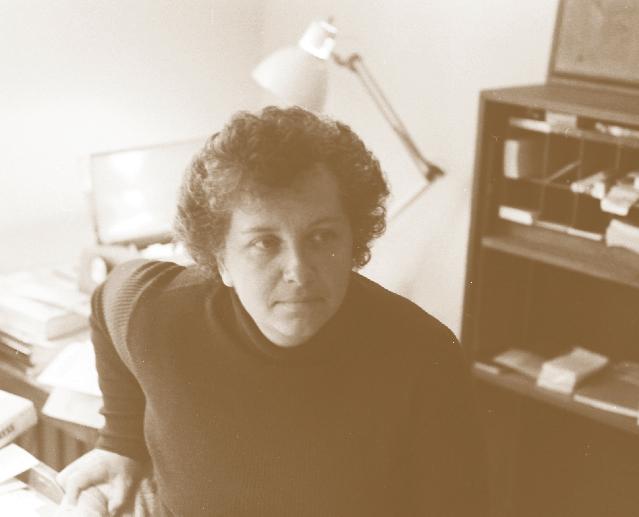
1937–2023
BY THORNDIKE LIBRARY CO-DIRECTOR TRISHA CANTWELL KEENE
SANDRA MODEEN started working at COA Thorndike Library in 1980, supporting the college through the devastating Kaelber Hall fire of 1983, rebuilding the library's physical space and collections, and helping to move the library twice. She cared deeply about our students, and was always engaged and supportive with her wisdom.
I arrived in 1990 as the night and weekend reference librarian; Sandra was the library's cataloger. Marcia Dworak, then library director, always appreciated Sandra's careful attention to detail and her enormous pride in her work. One library work-study alum remembers Sandra's mischievous smile and the twinkle in her eye. Sandra and Marcia had too much fun planning April Fools' Day jokes!
Alexa Pezzano '00 remembers Sandra's generosity in reaching
out to those students she thought were in need. Sandra also knew children. I often remember being at my wit's end with a situation with my daughter, and Sandra always having wise, soothing, sound advice. A steadfast presence, Sandra shared her wisdom about getting on in the world and with everyone around her.
I worked with Sandra until her retirement in 1999. When I saw Sandra around Bar Harbor after that, she always greeted me with her warm smile and questions about my family, friends, COA staff, and students. Sandra always spoke lovingly of her family, near and far, related and extended.
I attended Sandra's service in Otter Creek this past August and saw how deeply her family, friends, and Otter Creek neighbors loved her in return. Rest well, my friend. You are missed.
BY DAN MAHONEY
CHARLIE FARLEY grew up in Manset and graduated from Pemetic High School. He was a great athlete, which led him to coach basketball and softball for many years at Mount Desert Island High School. Charlie touched a lot of hearts over the years. He was a member of COA’s Buildings & Grounds (B&G) team from 2002 until his retirement in 2016. Celebrating his retirement from the college, former B&G director Millard Dority described Charlie's work like this: "Charlie was hired in 2003 to be a dorm custodian, but soon became responsible for the care of all buildings south of Turrets. He takes great pride in the looks and condition of Deering, Davis Center, Witchcliff and the rest, but even more than that, Charlie's broad range of experience in other areas has made him a valuable consultant for rest of the B&G staff on many a sticky situations, be them mechanical, structural, or automotive."
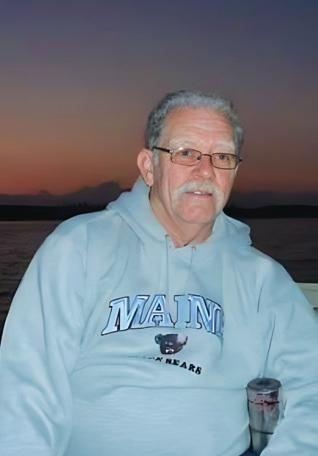
BY MOLLY PIFKO '22
OF THE ATLANTIC and the MDI community mourn the loss of our beloved adjunct professor Bob Seddig. Bob taught constitutional law and Supreme Court history for 11 years at COA, following 45 years as a political science professor at Allegheny College. There, he was awarded the Julian Ross Award
for excellence in teaching, had an endowed faculty chair created in his honor, and was named alongside his wife Lyta as a Danforth Fellow, a program created to nurture and foster meaningful relations between faculty and students in undergraduate education.

Behind this impressive list of accomplishments was a humble and open-hearted man whose passion for teaching and the law was always evident. Bob embodied the COA spirit of lifelong study driven by curiosity and love for one’s chosen subject. His hopeful clarity about constitutional law and encouragement to continue deepening the lines of inquiry we opened in his classes are part of what drove me to pursue law school after graduating from COA.
Bob aspired from an early age to be a teacher, and his dedication to his students showed through in the many ways he supported us—whether through a kind email, a homecooked meal, or generosity with his time and expertise. His generosity also extended to the wider MDI community, where he was a member of the board of directors of Camp Beech Cliff and served as a deacon for the Somesville Union Meeting House United Church of Christ.
In addition to constitutional law and politics, there were two things that Bob would discuss with students whenever he could, always with a joyful twinkle in his eye. Those were his passion for cooking and his wife of 56 years, Lyta. Bob and Lyta met at a mixer in 1965, when she was a senior at Douglass College and he was pursuing his PhD at Princeton. In retirement, they restored a historic house in Southwest Harbor, and he delighted in inviting classes there for dinners made with the vegetables he had grown in his garden. Speaking to Bob always left me with the impression that he was someone living a life he truly loved, and having been inspired to follow that example, this might be my favorite of the many lessons I learned from him. The COA community was lucky to have called him a member, and he leaves a rich legacy of students whose lives he helped shape.
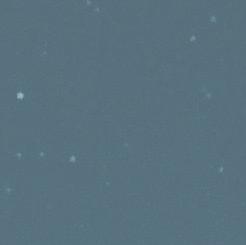




By Kelly Dickson MPhil '97
ARMY BRAT, Elizabeth Rousek Ayers
'95 moved around a lot as a child, in both the United States and Germany. As a result, she craved stability.
“I wanted to be a part of something, and I found that sense of community at College of the Atlantic,” she says. “I loved my OOPS trip—a sea kayaking trip led by Ander Thebaud and Dianne Clendaniel. I loved the food at Take-A-Break and Bar Harbor in the winter—the walks back and forth to campus, walking my dog in the park, and feeling safe and comfortable all the time.”
Elizabeth recently named COA in her will. “COA is such a piece of my heart and soul, and I believe in the mission wholeheartedly,” she says. She and her husband Matt Ayers asked a friend of theirs who practices law to draft their will. “I feel like creating a will is a good opportunity to reflect on your priorities. My dad died unexpectedly when he was 50. Life can be so short. It makes you think, what can I do now and what can I potentially leave behind? It doesn’t have to be a grand amount—whether it’s $1,000 or $10,000, it shows you believe in COA.”

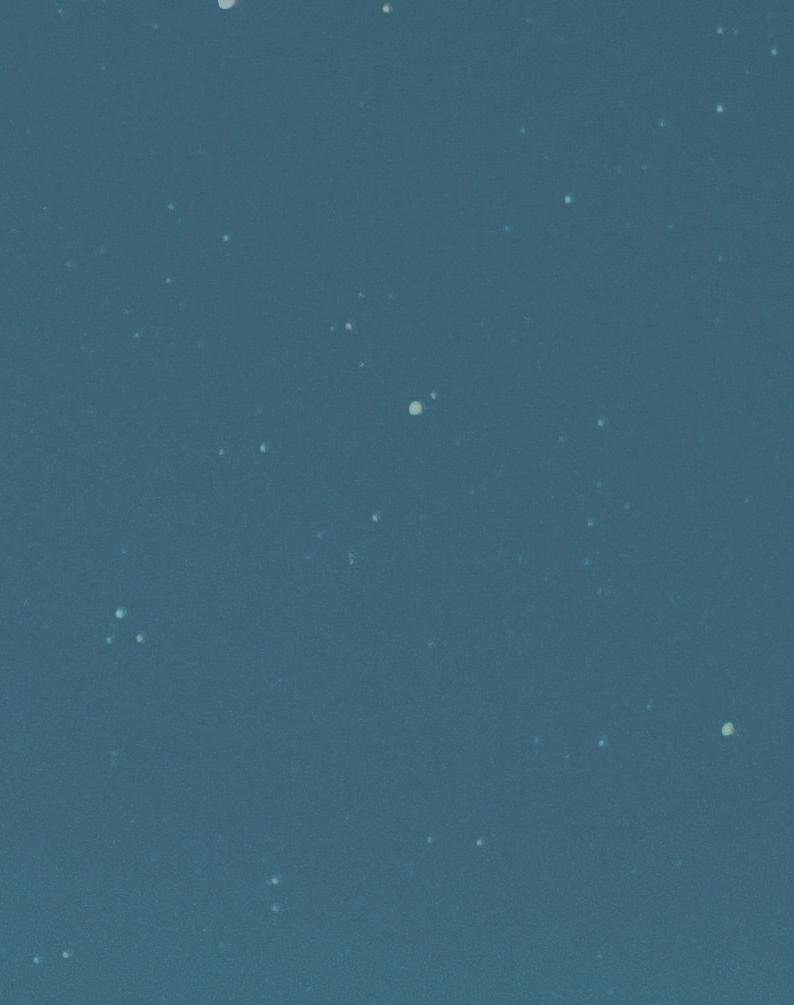

Elizabeth says she takes the interconnectedness of human ecology with her in everything she does now. “It can be an inconvenient world when everything isn’t black and white—but this is the completely messy, interesting world that I discovered at COA.”
Elizabeth studied alternative agriculture and botany at COA, which prepared her to work with the Royal Horticultural Society in England and for private estates in Maine, Connecticut, and Pennsylvania. She earned a master’s degree at the Conway School of Landscape Design in 2001, but didn’t want to spend her life “drawing circles and figuring out parking for people,” so she continued her career as an estate gardener with the additional skill set of design. This allows her to keep her hands dirty and offers the flexibility of working part time so she can spend more time with her family.


Good news for COA: both of her daughters, Ava (16) and Lucy (13), are considering attending the college. “I appreciated the opportunity I had at COA, so I want to get them there,” she says.
Elizabeth visits campus every other year and appreciates the new dorms and classroom space. She stays in touch with former classmates, enjoys receiving COA’s alumnx newsletter, The Peregrine, and follows COA on social media.
“It’s hard to be competitive in
education, but I feel that COA has risen to the challenge of staying relevant.”


COA is grateful to Elizabeth and all the others who have chosen to name the college in their will. To learn more about leaving a bequest to COA, please contact dean of institutional advancement Shawn Keeley at skeeley@coa. edu or 207-801-5620.

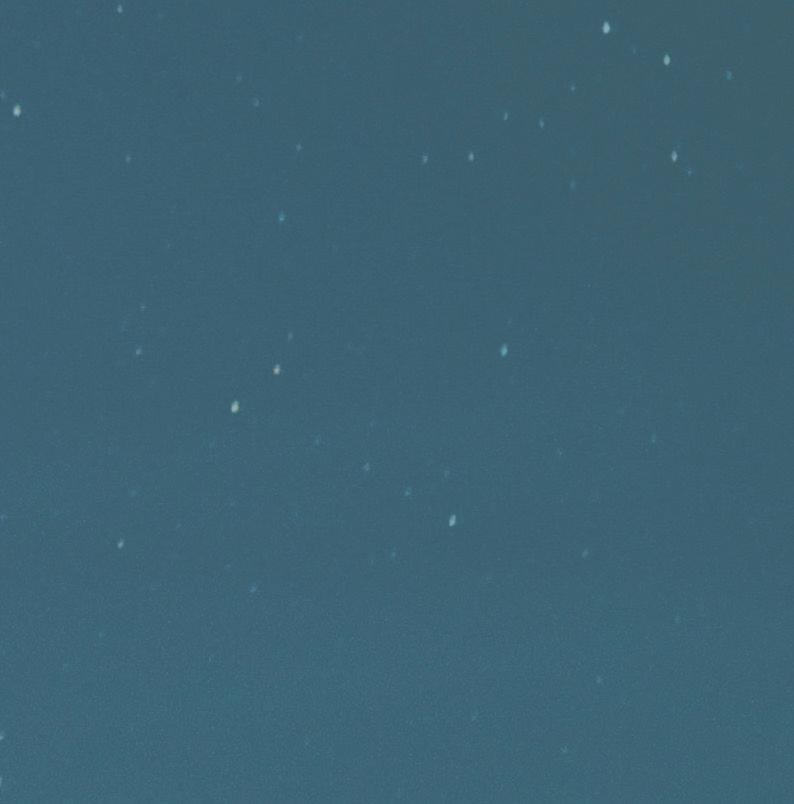
For the third year, alumnx are invited to take back campus—now in August! Bring your families, stay in the dorms, and eat in TAB. Join fellow alums for activities like boat trips in Frenchman Bay, tours of COA Beech Hill and Peggy Rockefeller farms, kayaking, and hiking. Enjoy good food, live music, and time to reconnect.






The Northern Lights Society was established to recognize and thank COA friends who have made planned gifts to the college. These gifts include bequests, charitable gift annuities, and summer, members will be invited to our second annual gathering. If you have made a planned gift to COA, please let us know so we can add



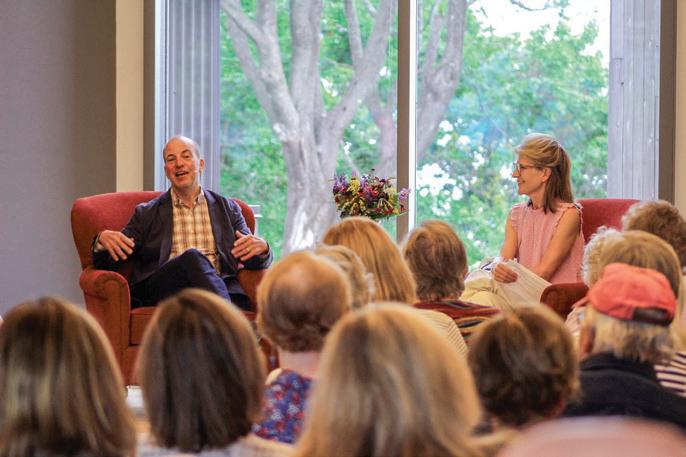
Join us on Tuesday mornings in the Davis Center for Human Ecology. COA faculty, trustees, and friends lead hour-long, in-depth conversations with special guests that engage the audience in thought-provoking discussions. Past speakers include authors Christina Baker Kline, Kim Stanley Robinson, and Margot Lee Shetterly, forest conservationist Roger Milliken, historian David Hacket Fischer, CEO of The Atlantic Nick Thompson, Chase Morrill ’00 of Maine Cabin Masters, and many others.
The 2024 College of the Atlantic Summer Institute will examine democracy in the United States during one of the most consequential years of our times.
Struggles for democracy traverse our lives and society, from ballot boxes to inboxes, from the corridors of Congress to the halls of schools, from kitchen tables to city streets. Questions of democracy confront us in our debates over freedom of the press, voting rights, and artistic freedom, in struggles against authoritarianism, and in conversations about how to effectively engage with disagreement and conflict across a range of topics.

Dating to the second century BCE, the kleroterion (pictured at right) was an early tool used by the Athenians to democratically select members of the boule, or local council.




Join College of the Atlantic from July 29–August 2 as elected officials, authors, analysts, and community organizers discuss what democracy means to them, the threats it faces, and how our individual and collective efforts can fortify democracy now and for future generations.
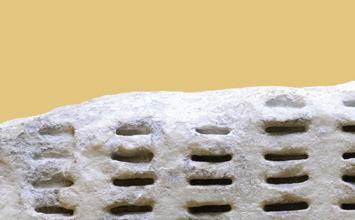


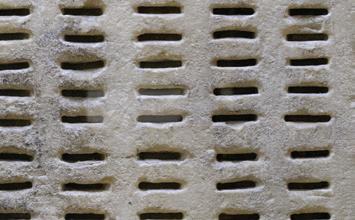




College of the Atlantic Magazine
105 Eden Street, Bar Harbor, Maine 04609 coa.edu









